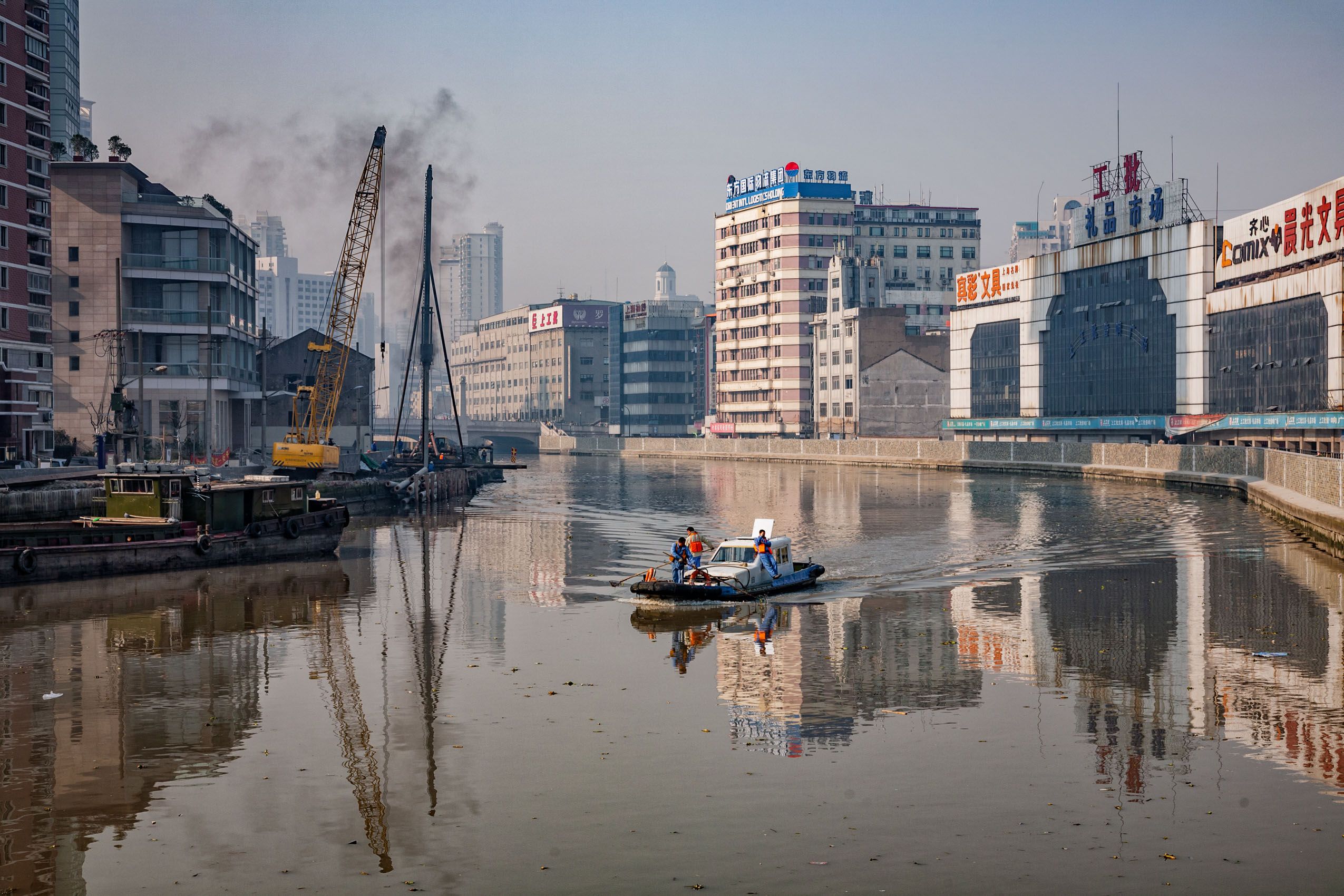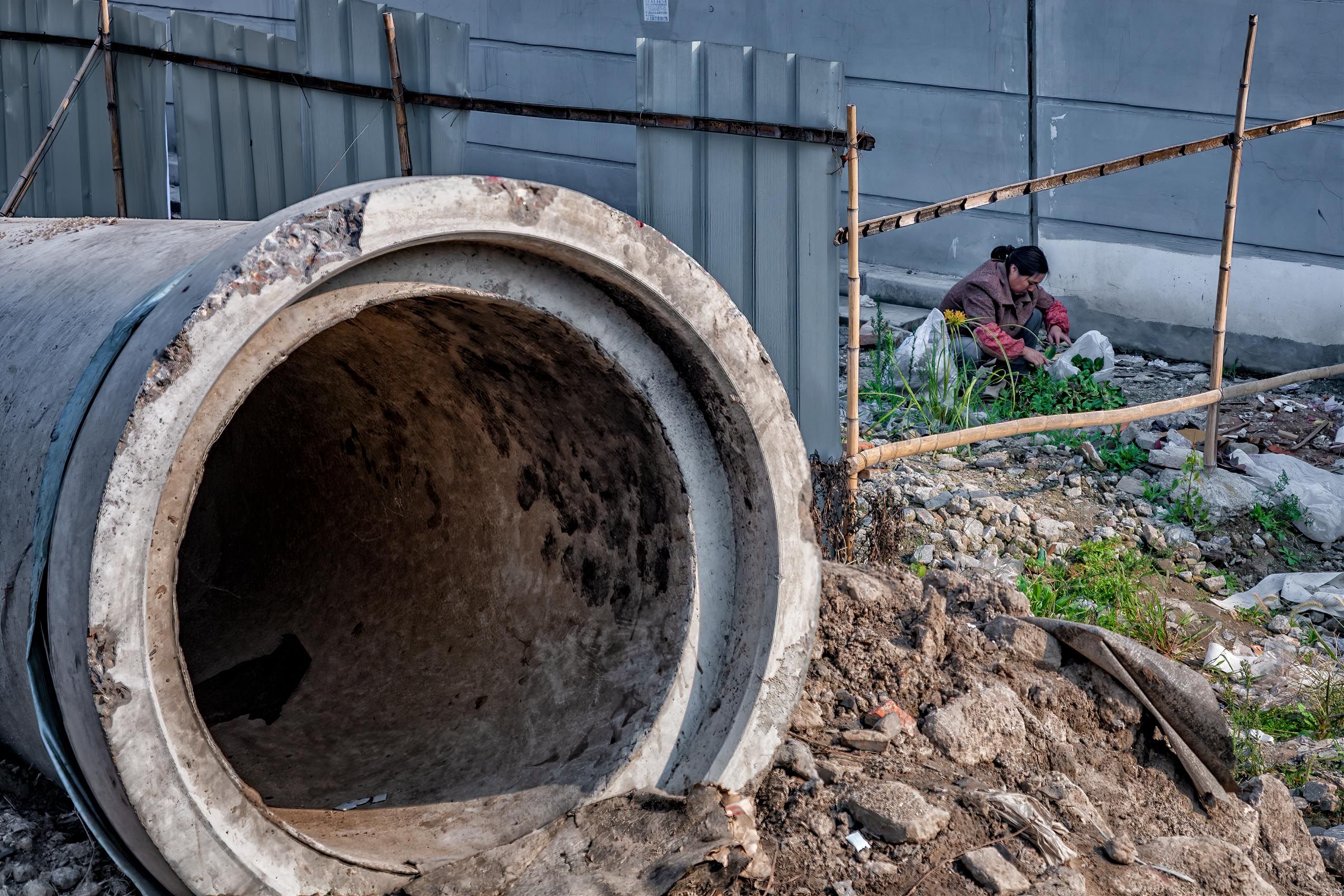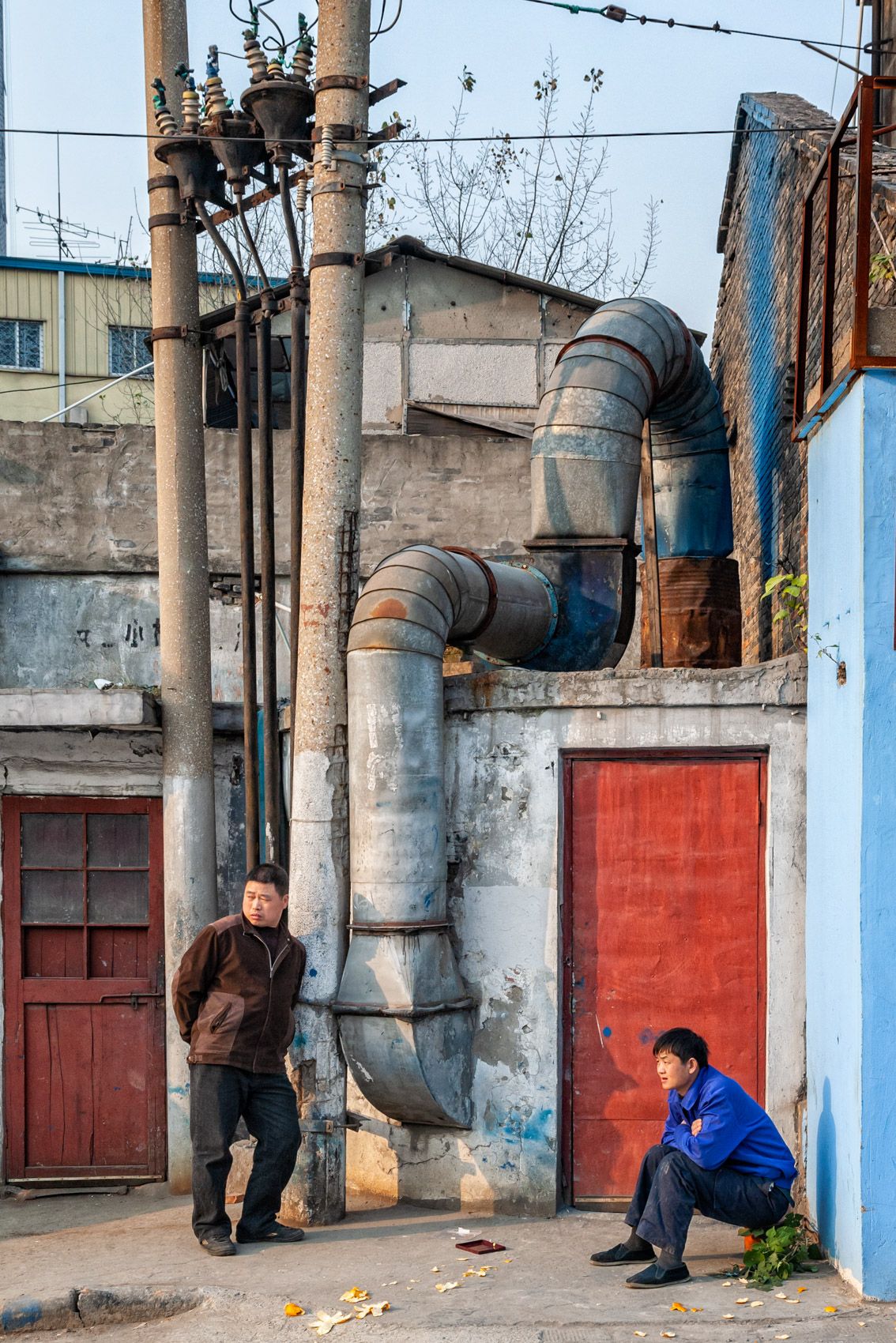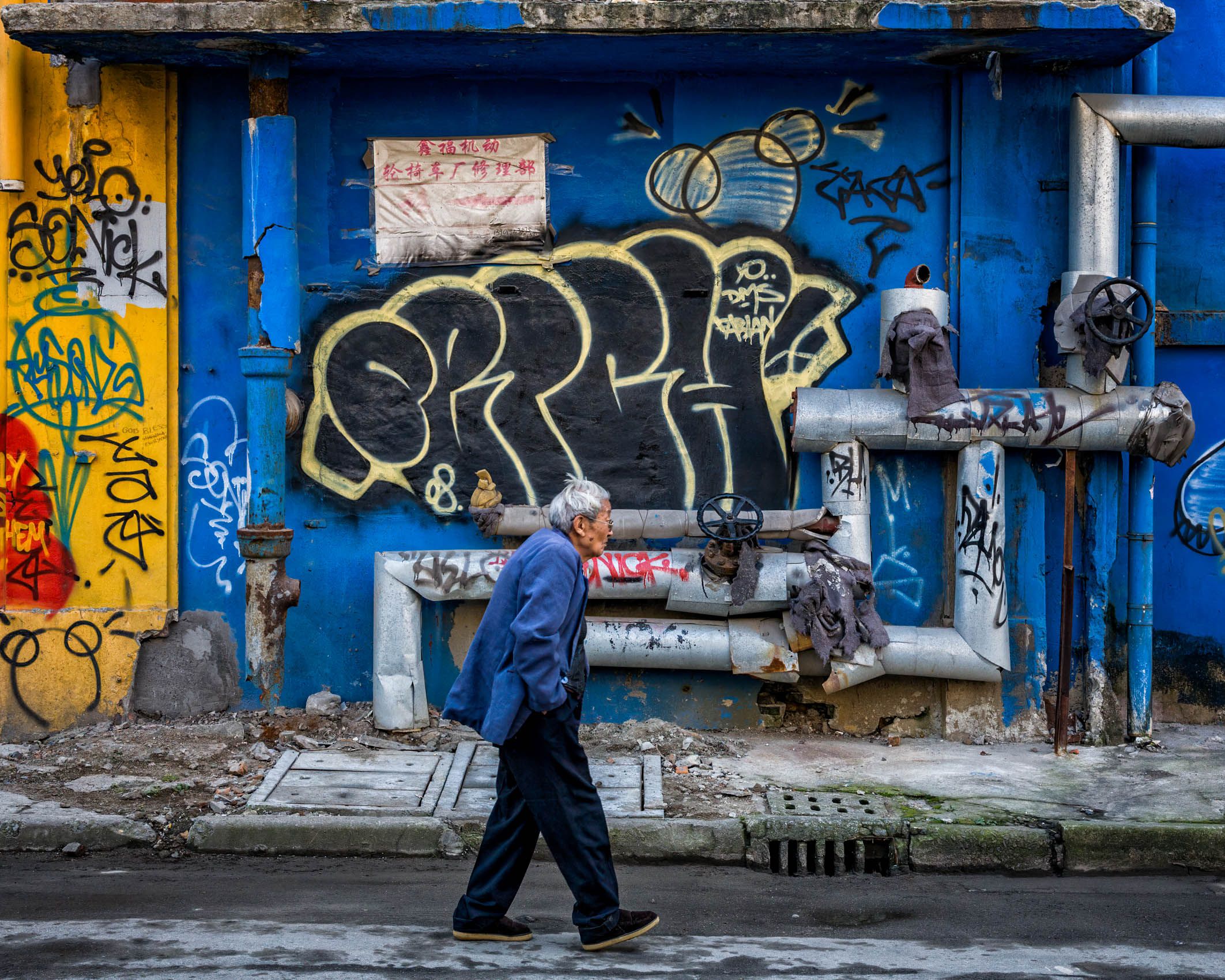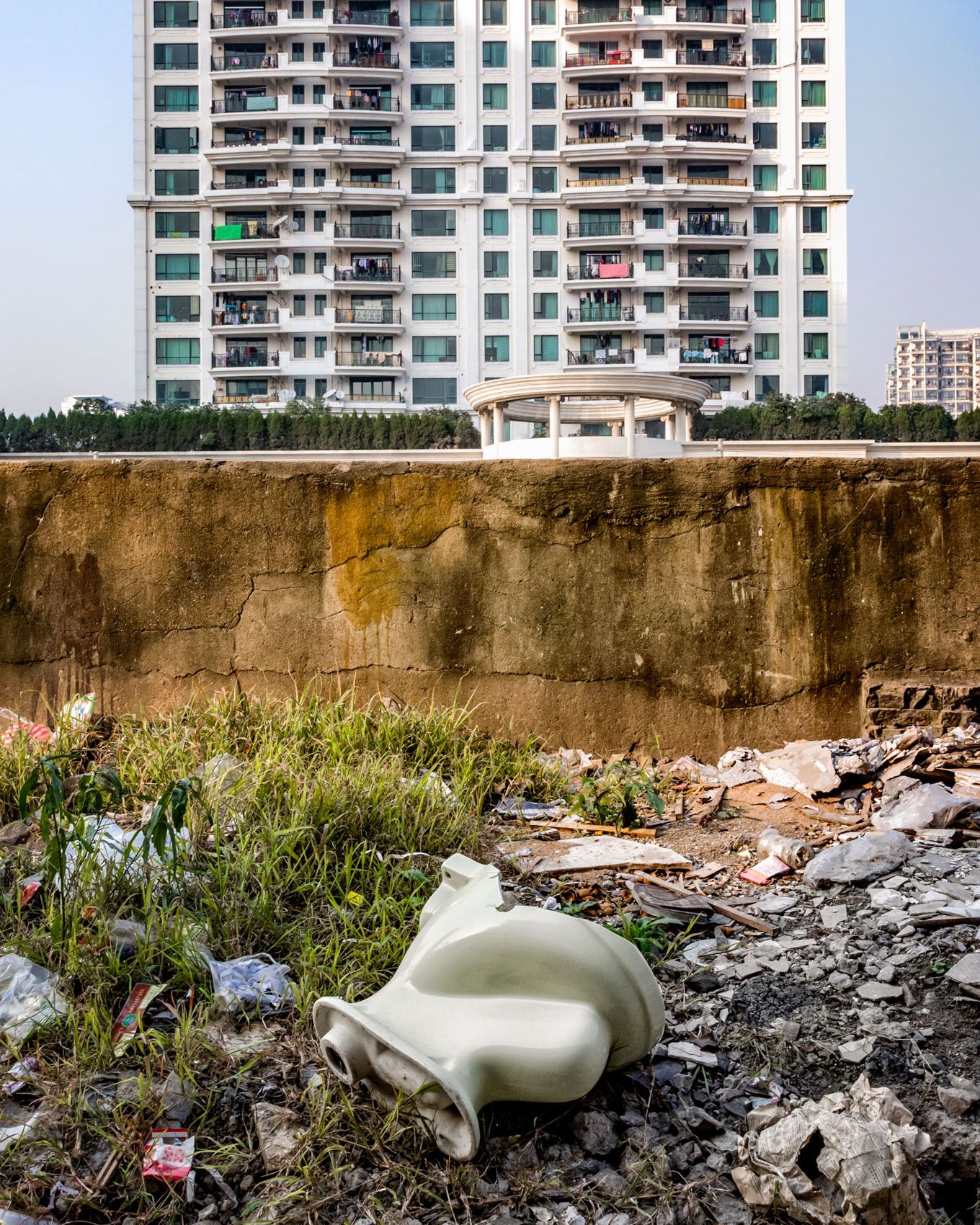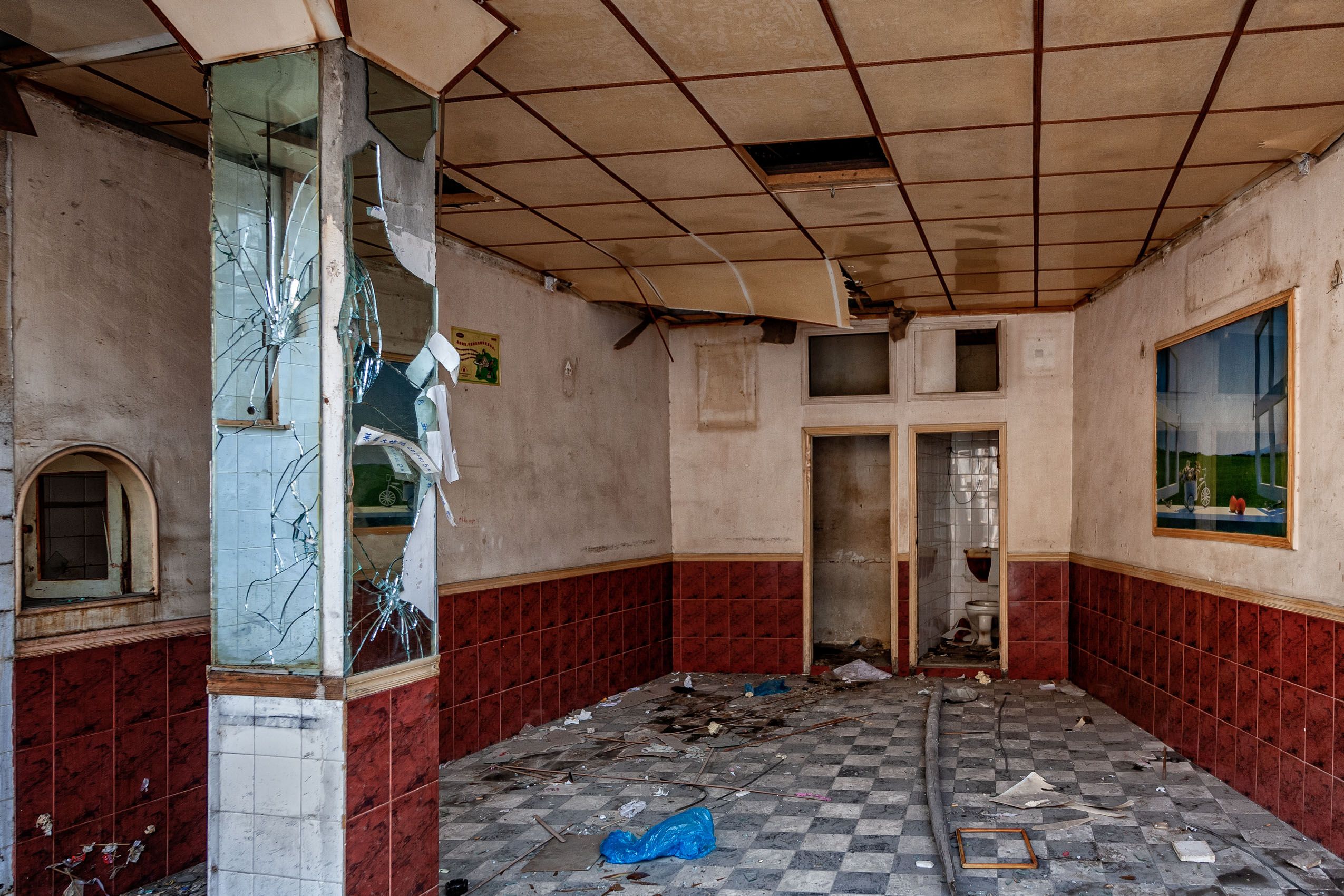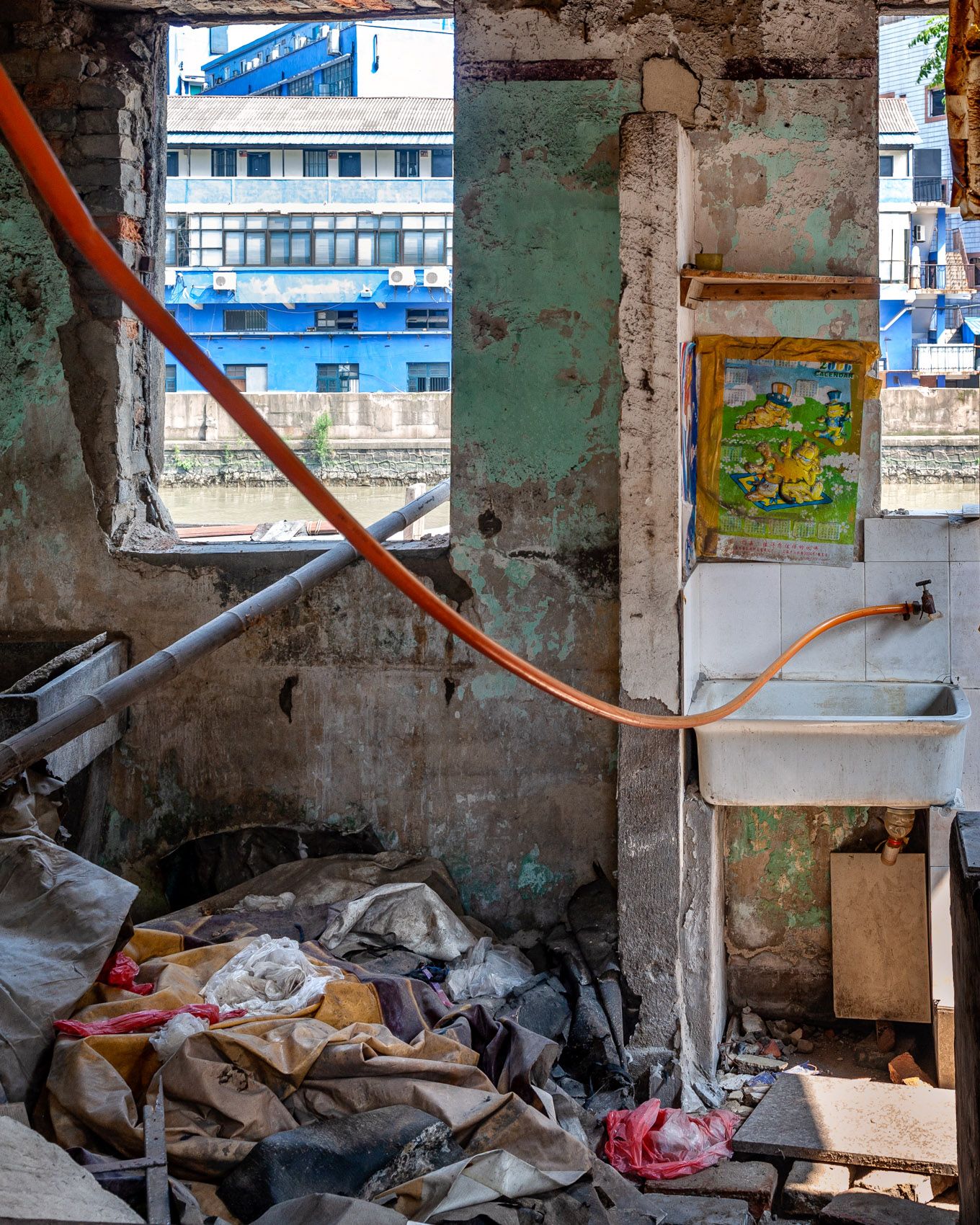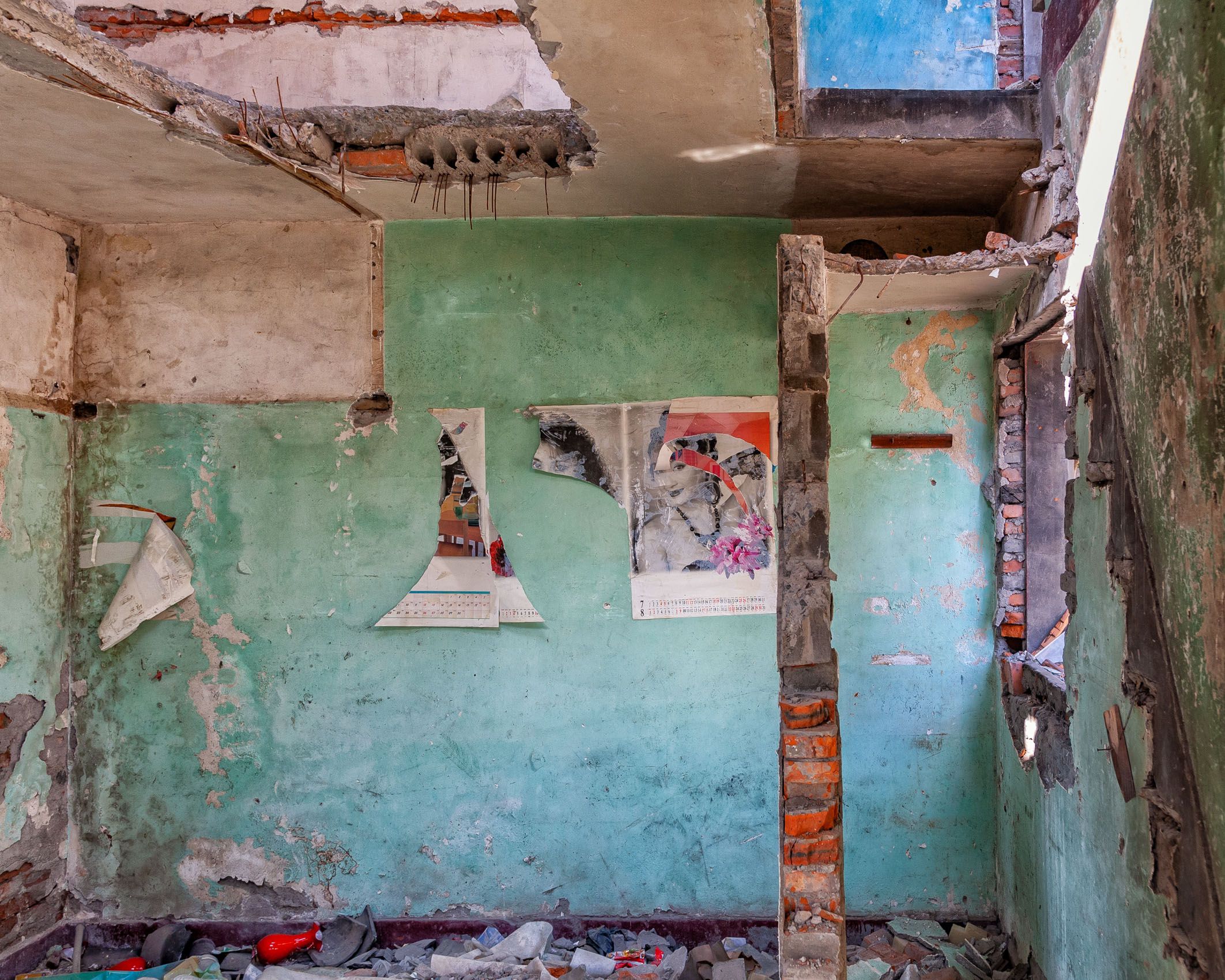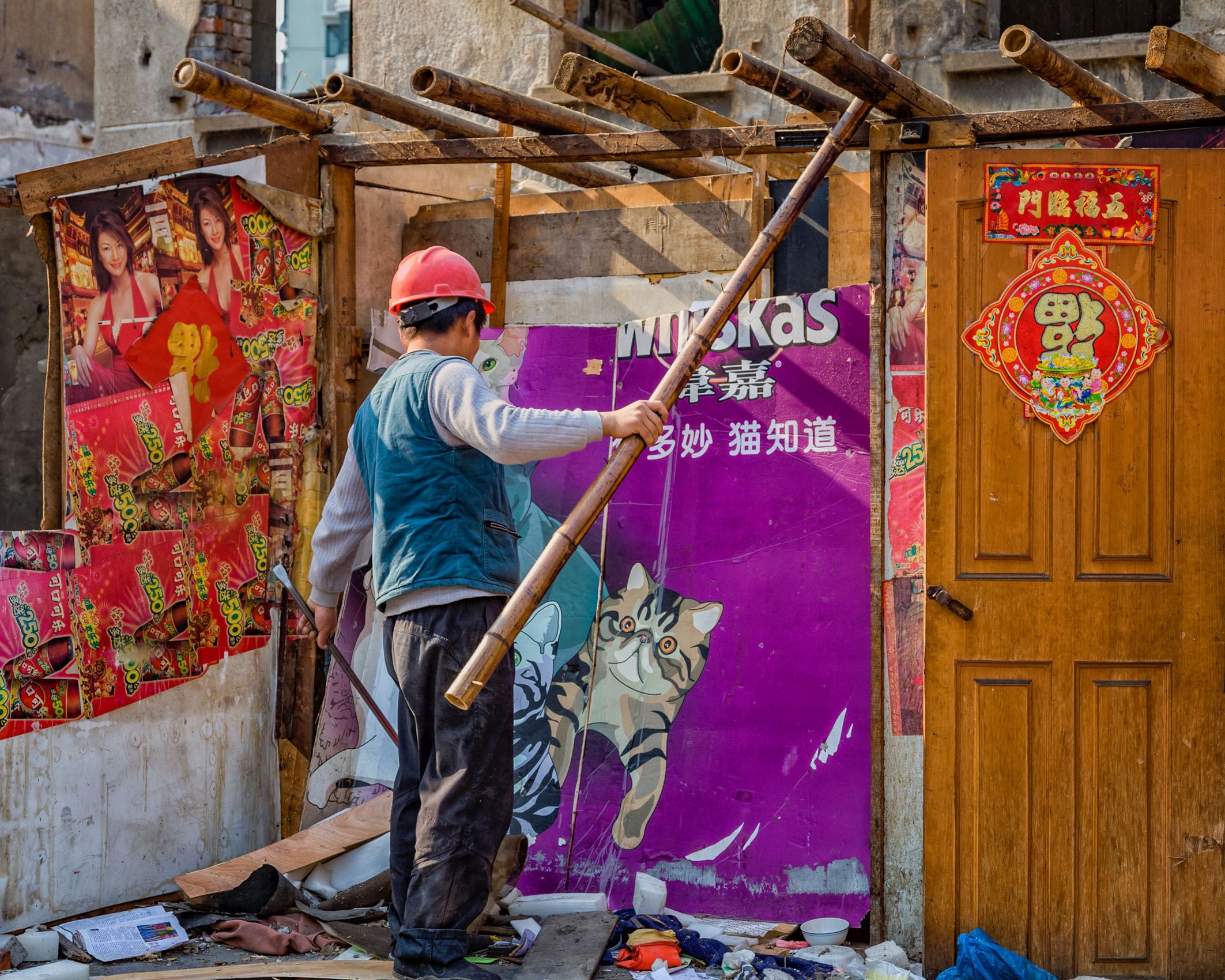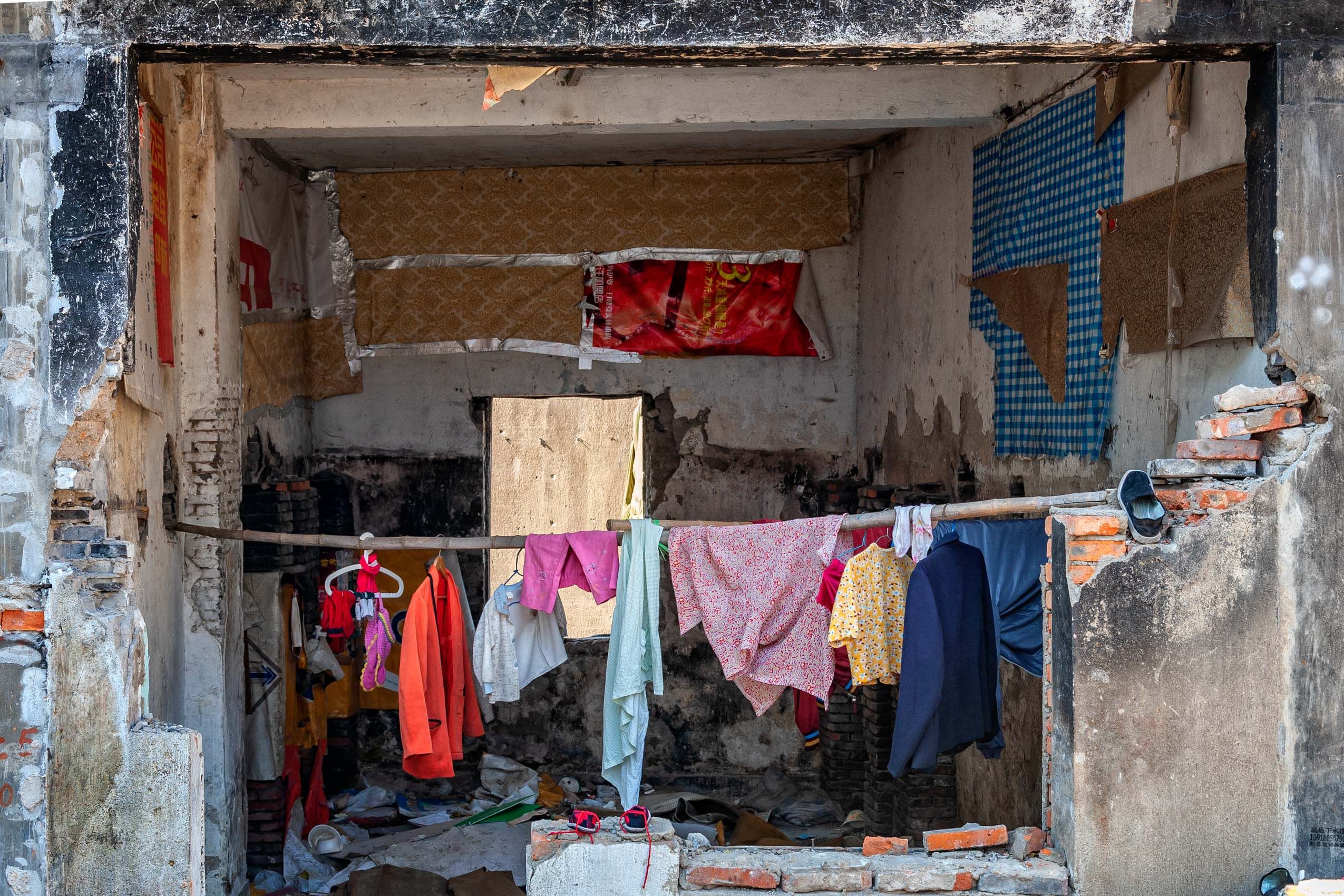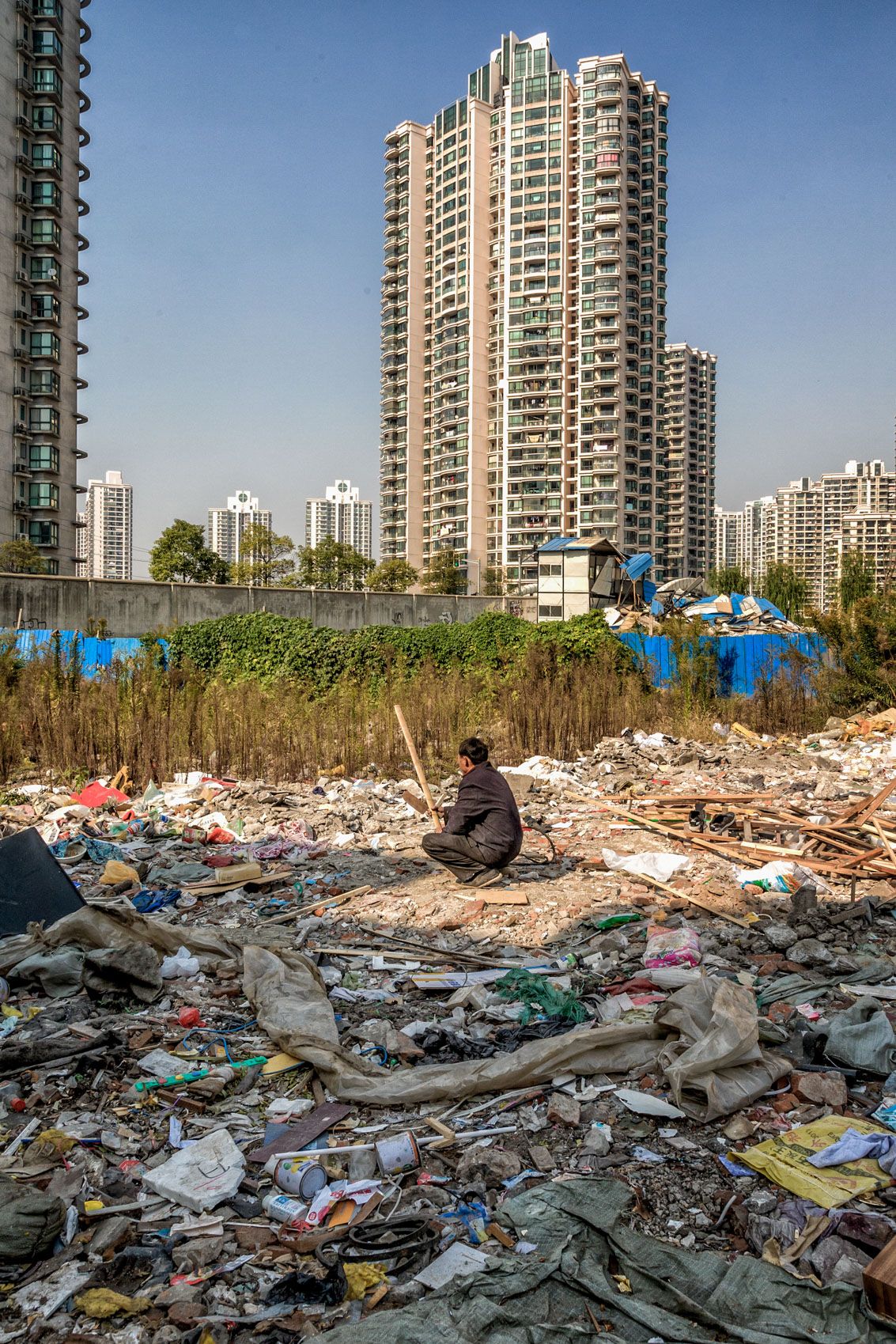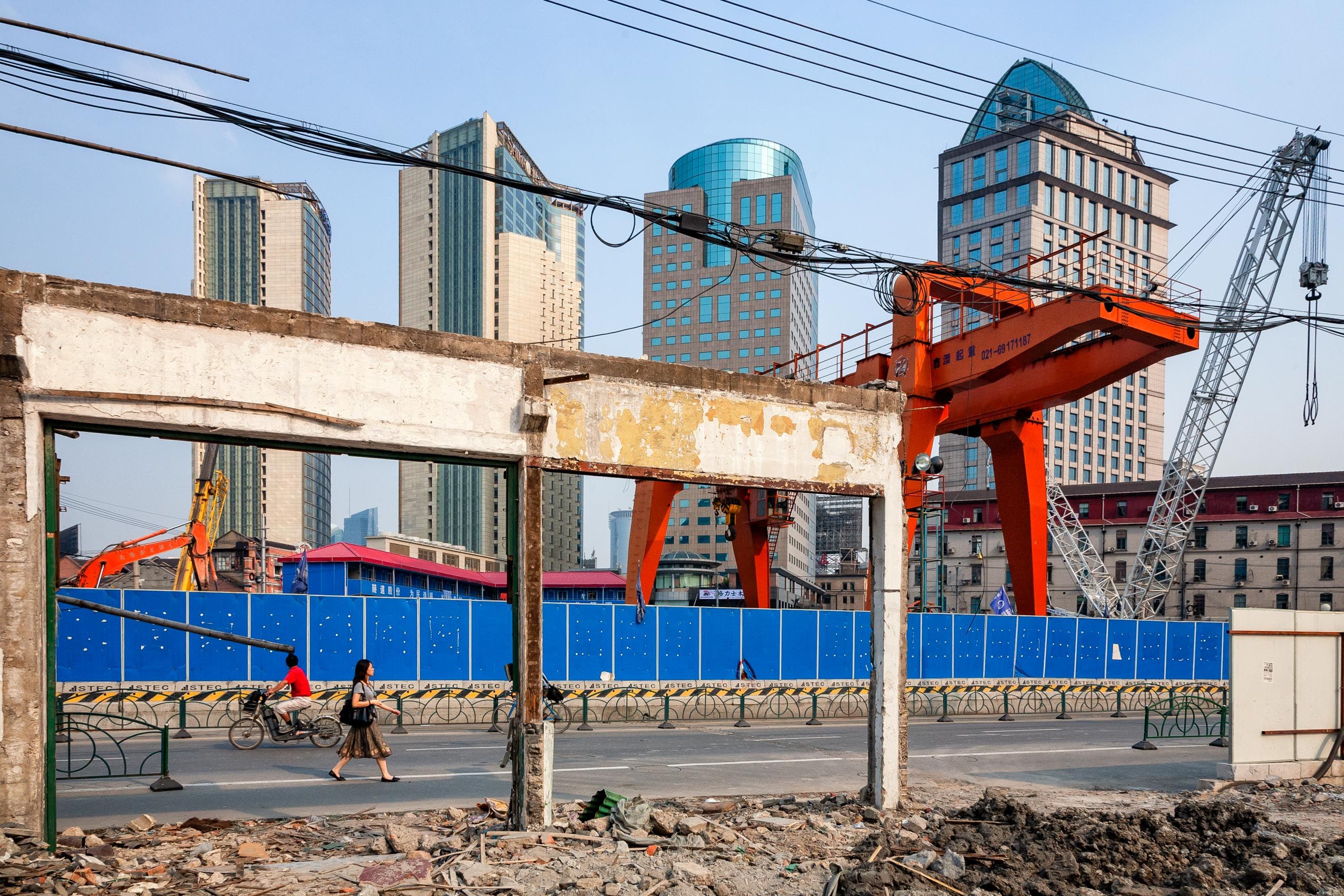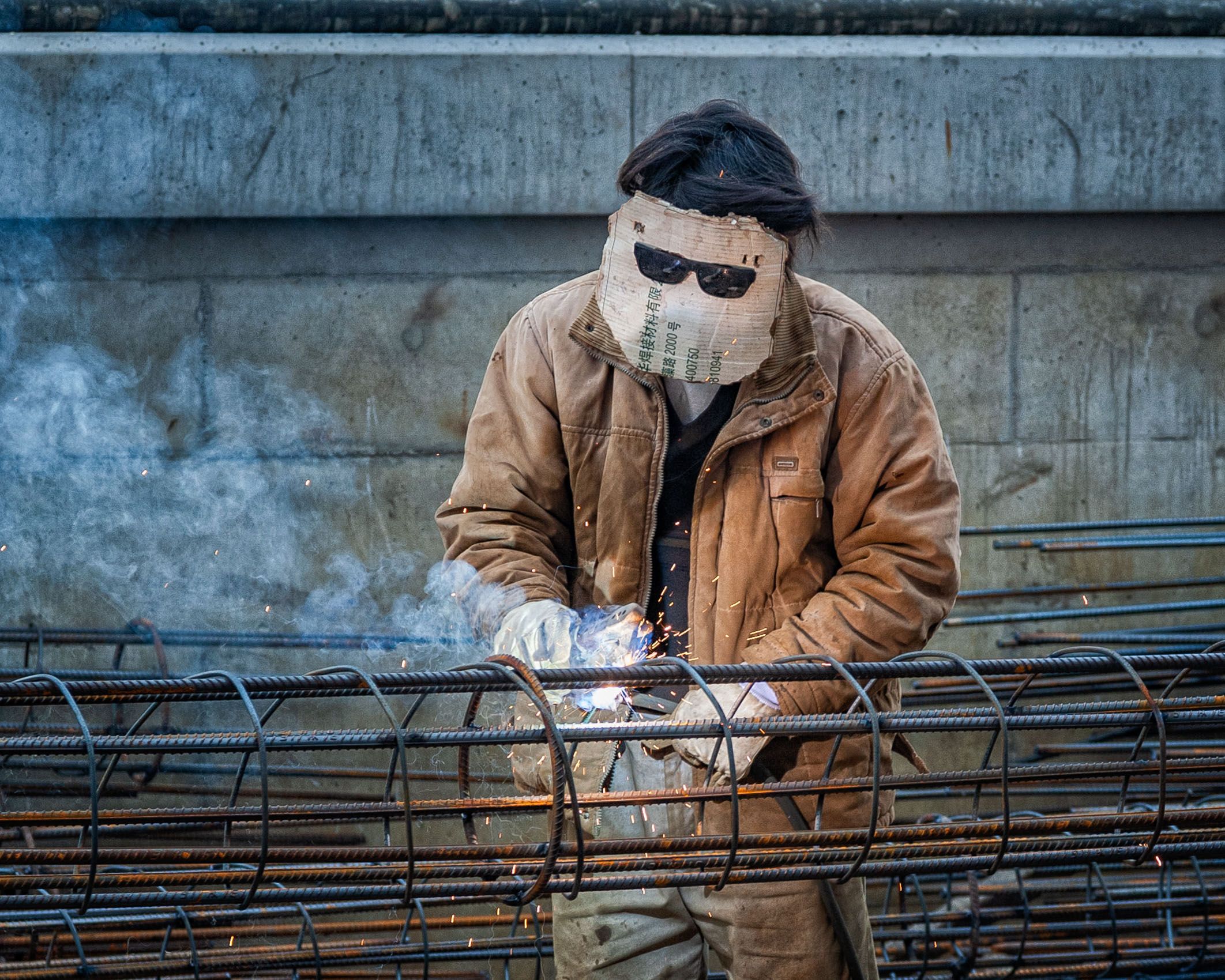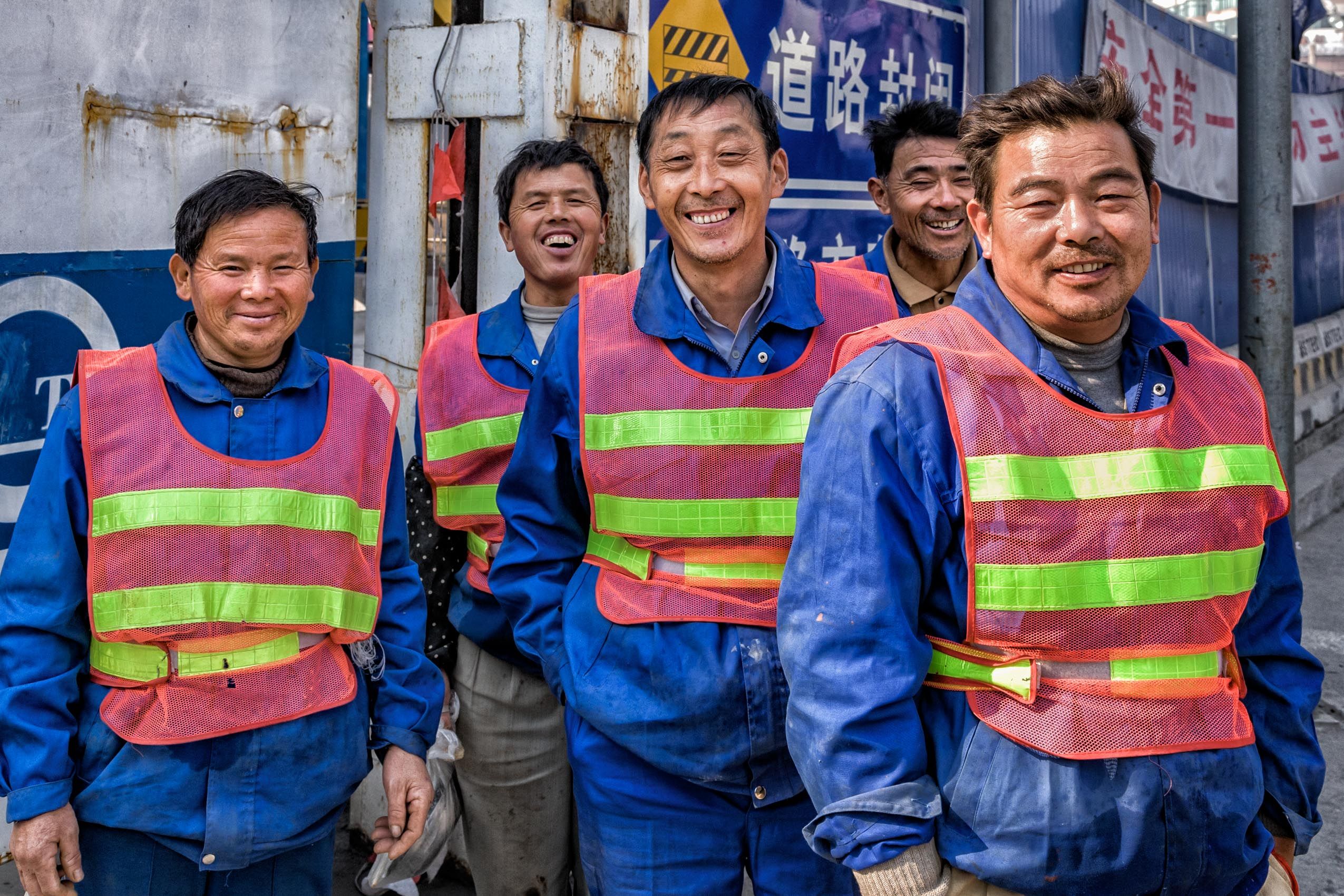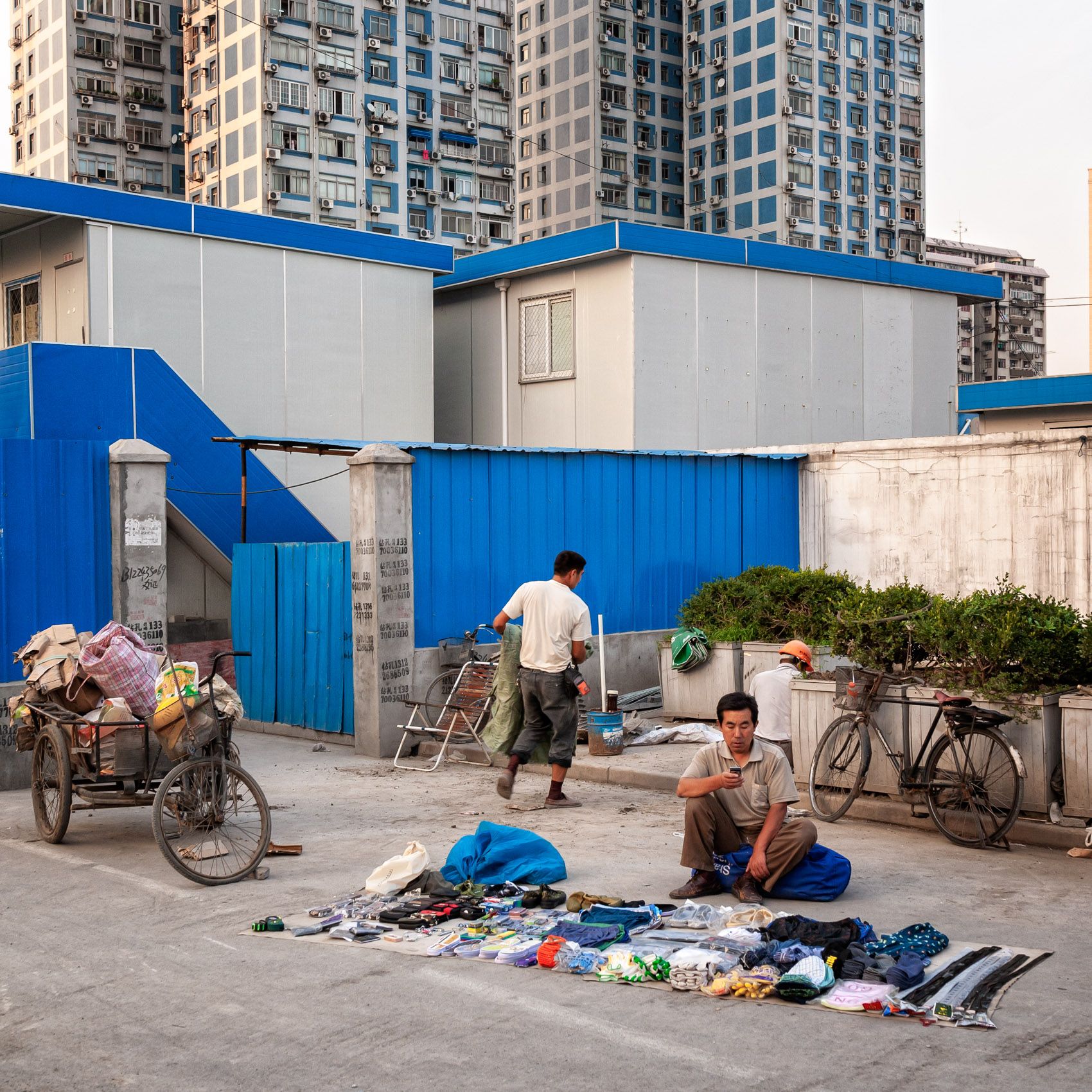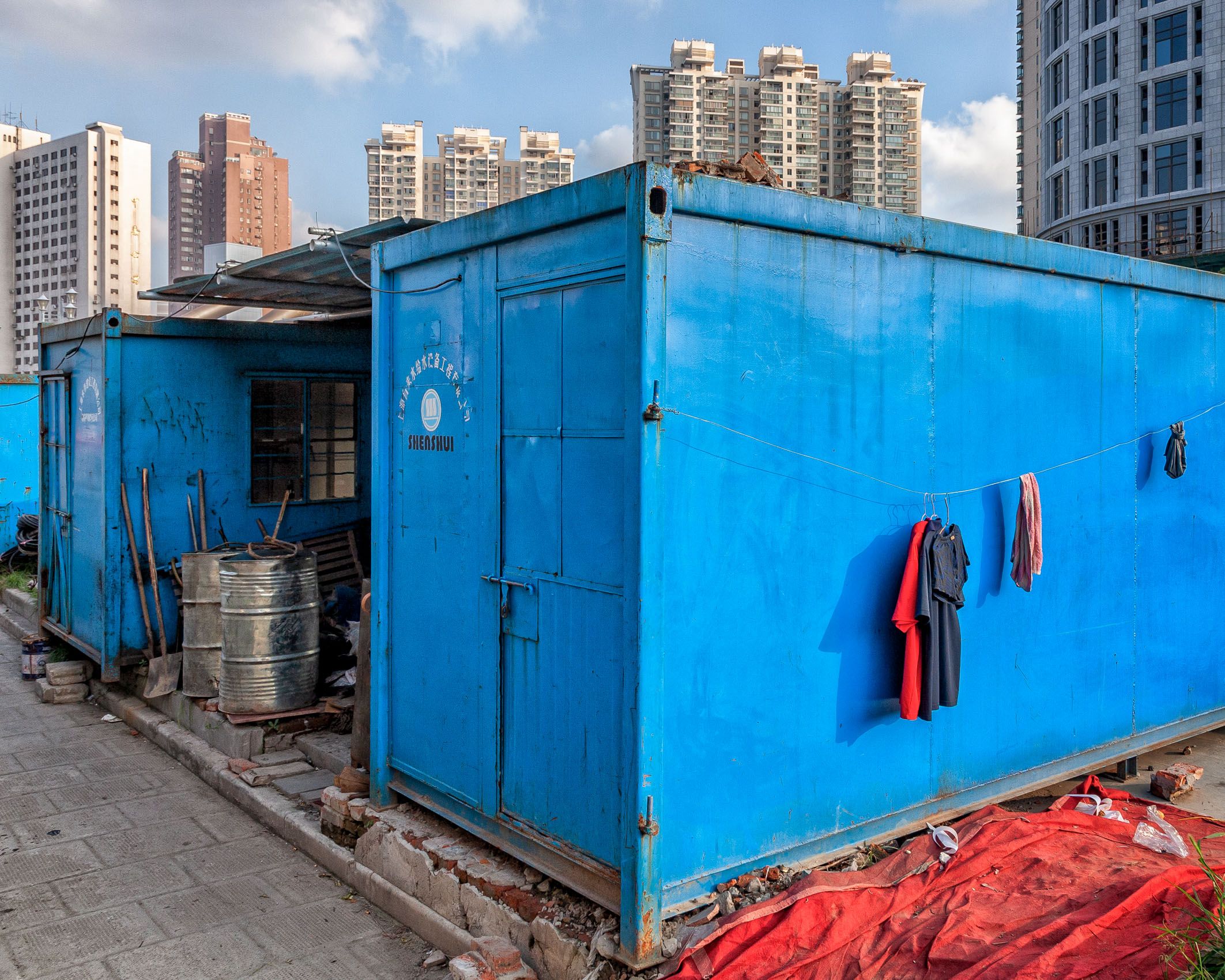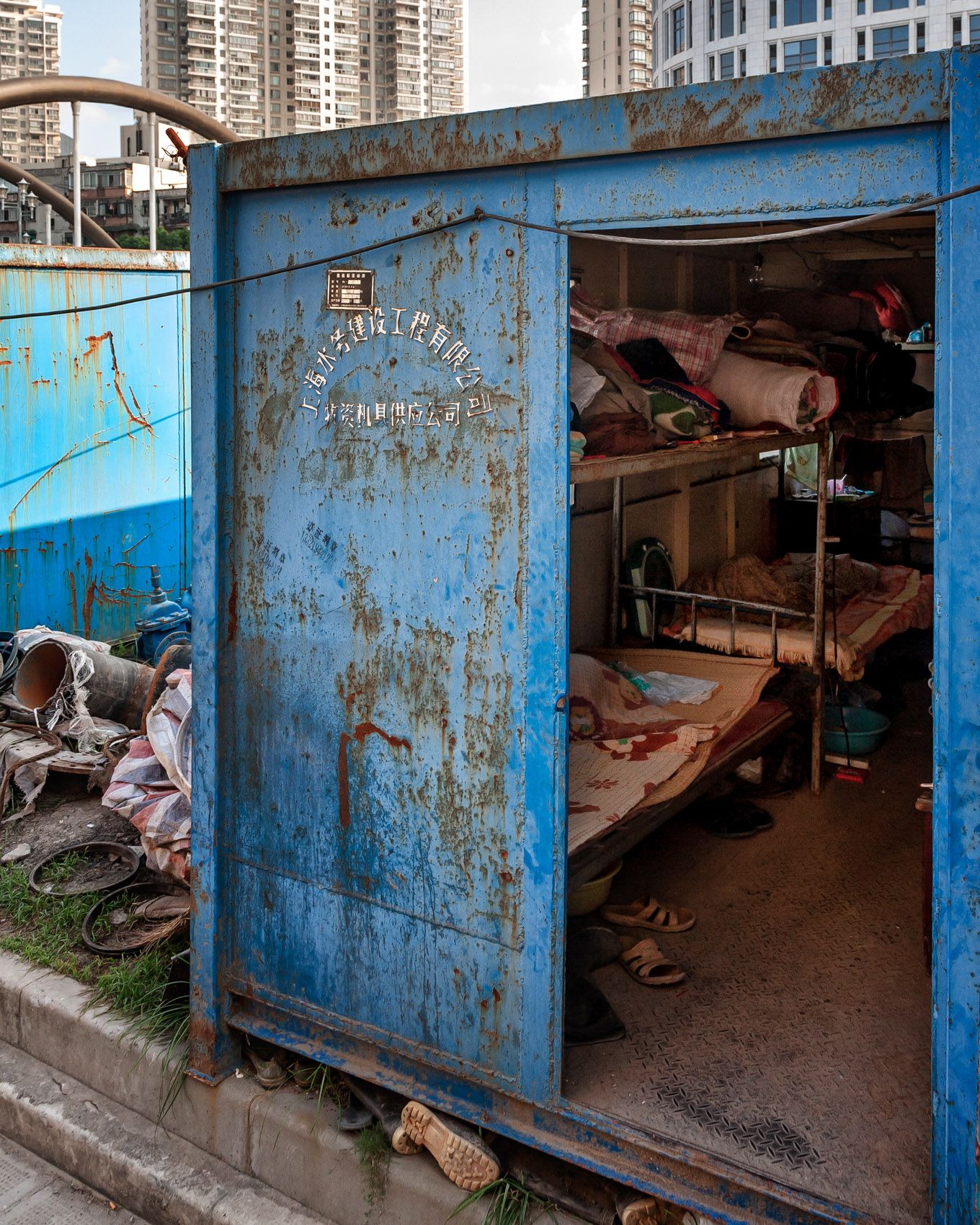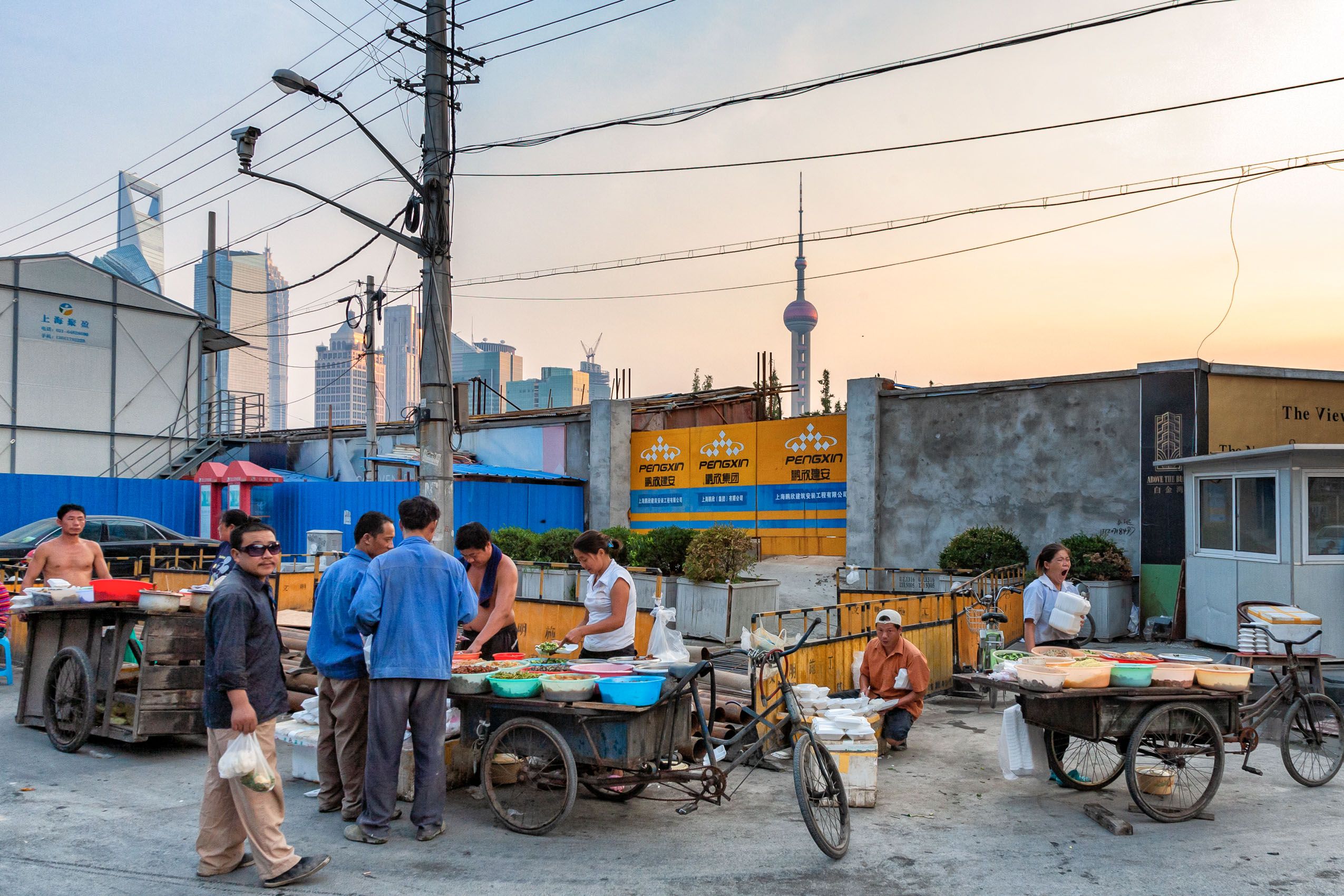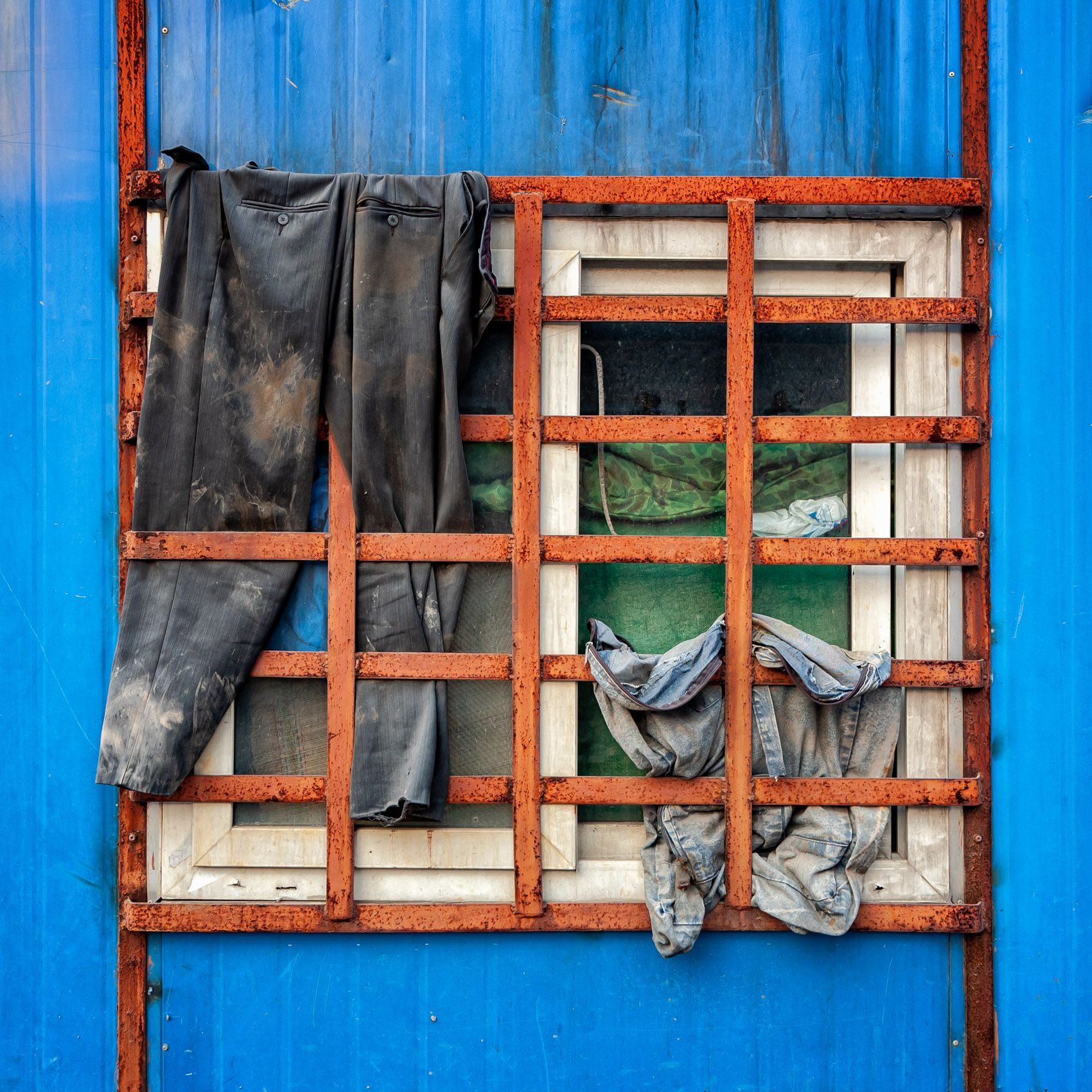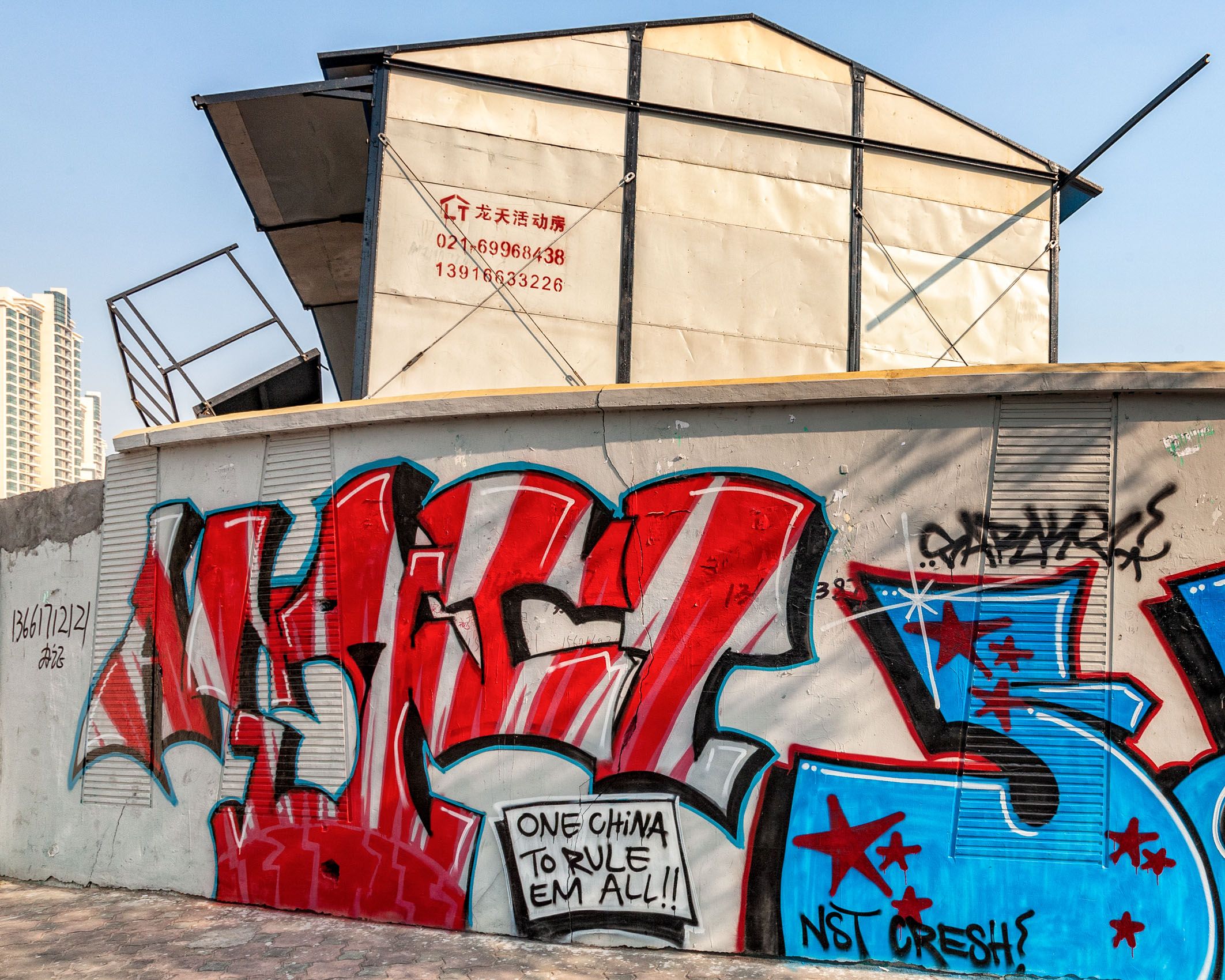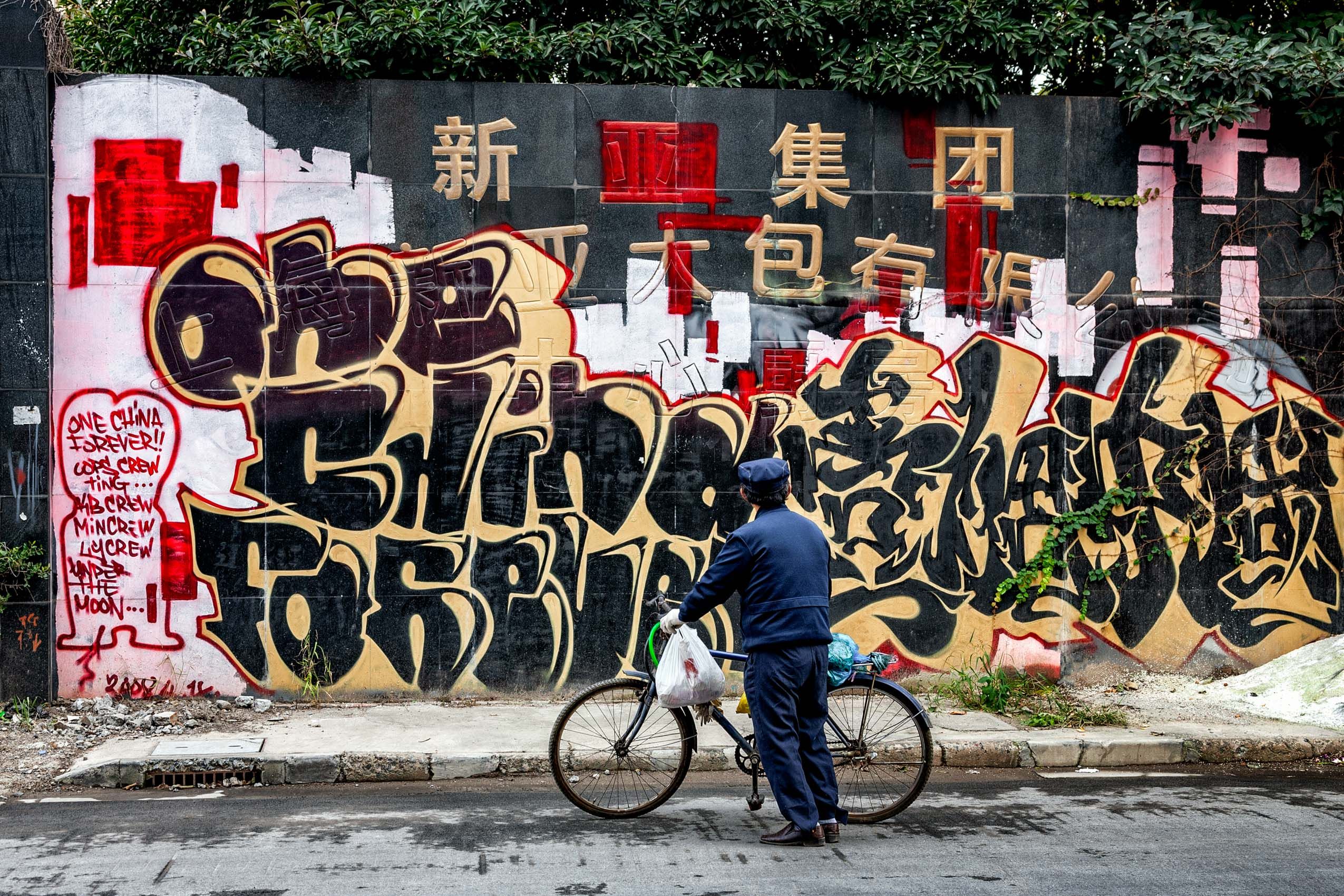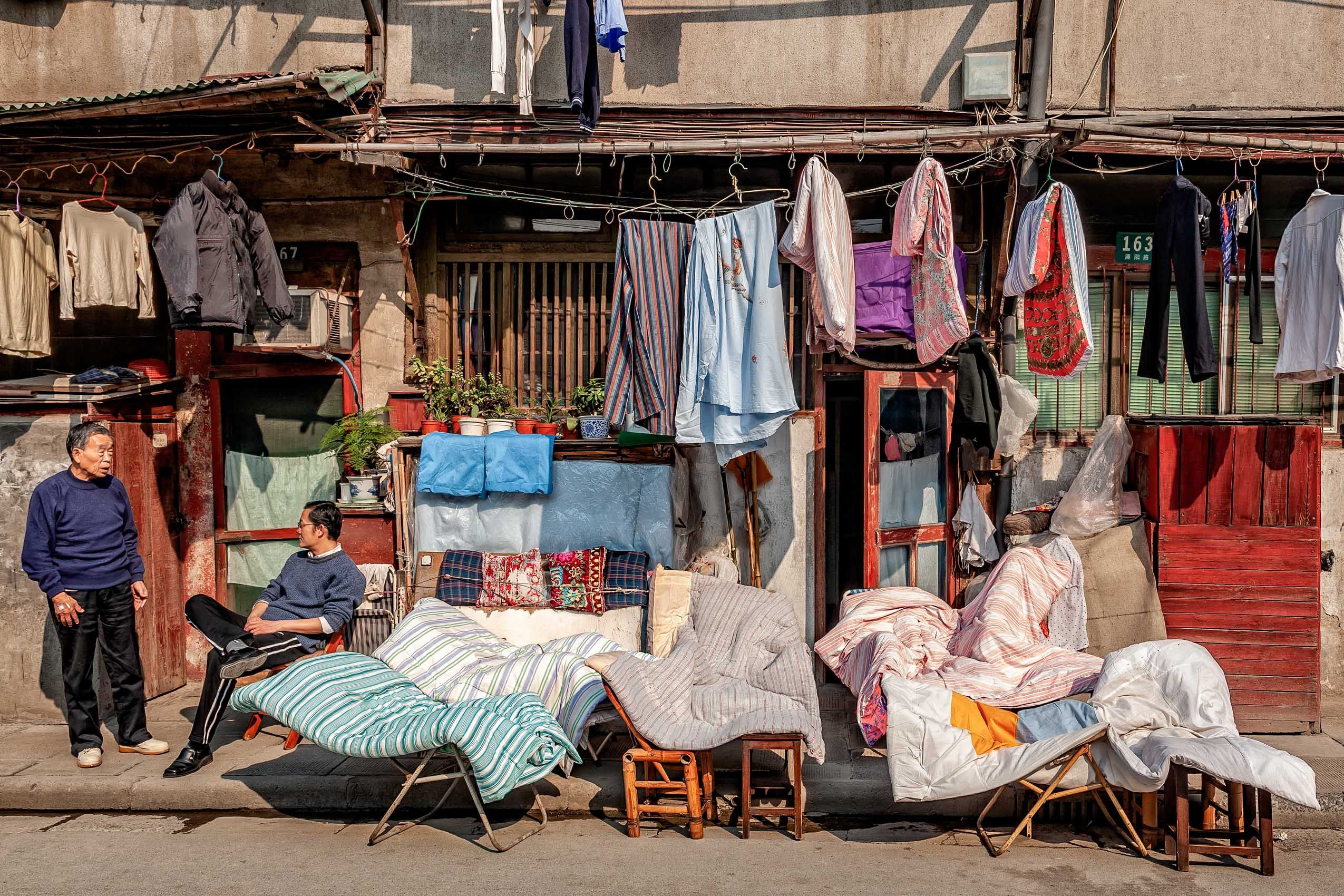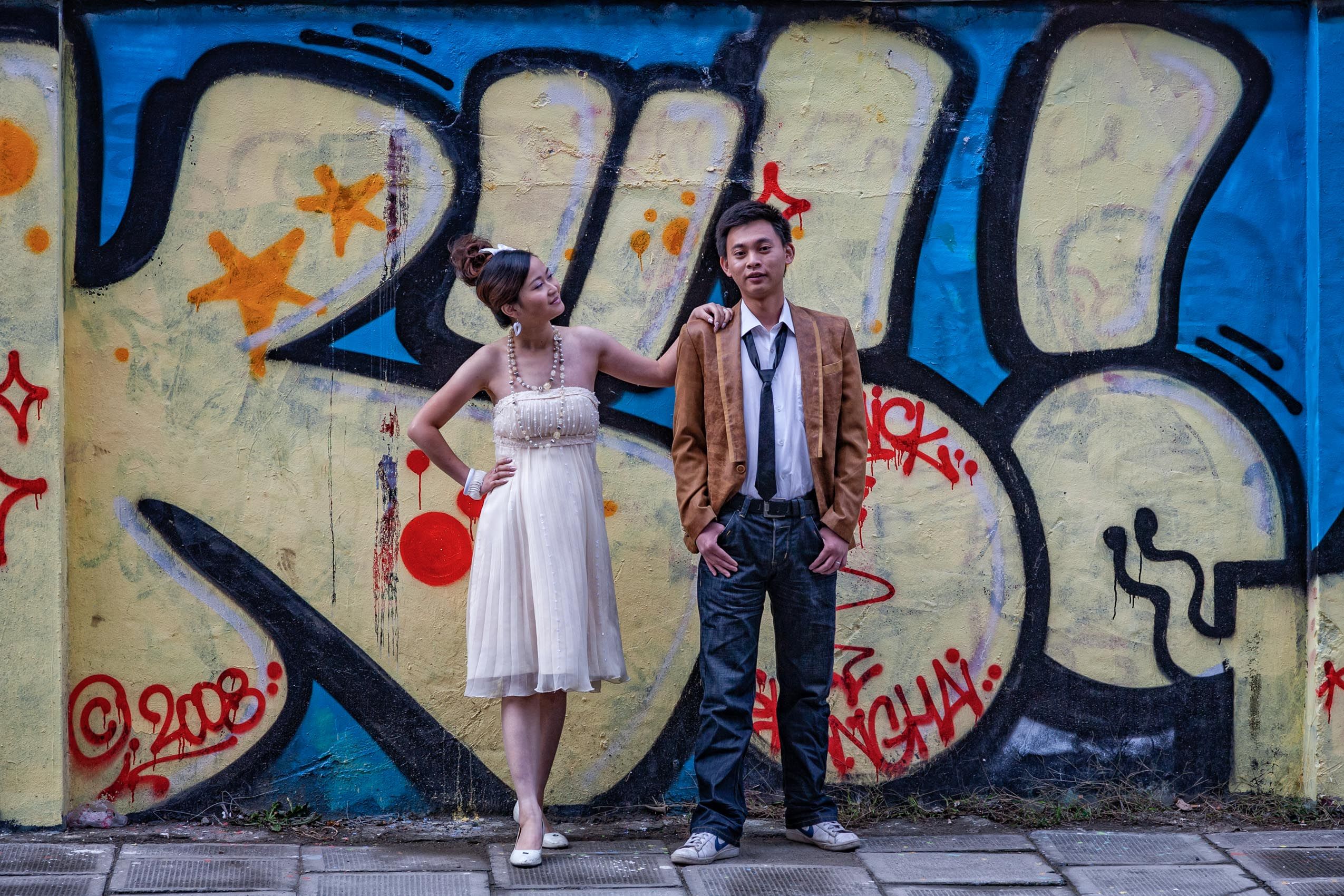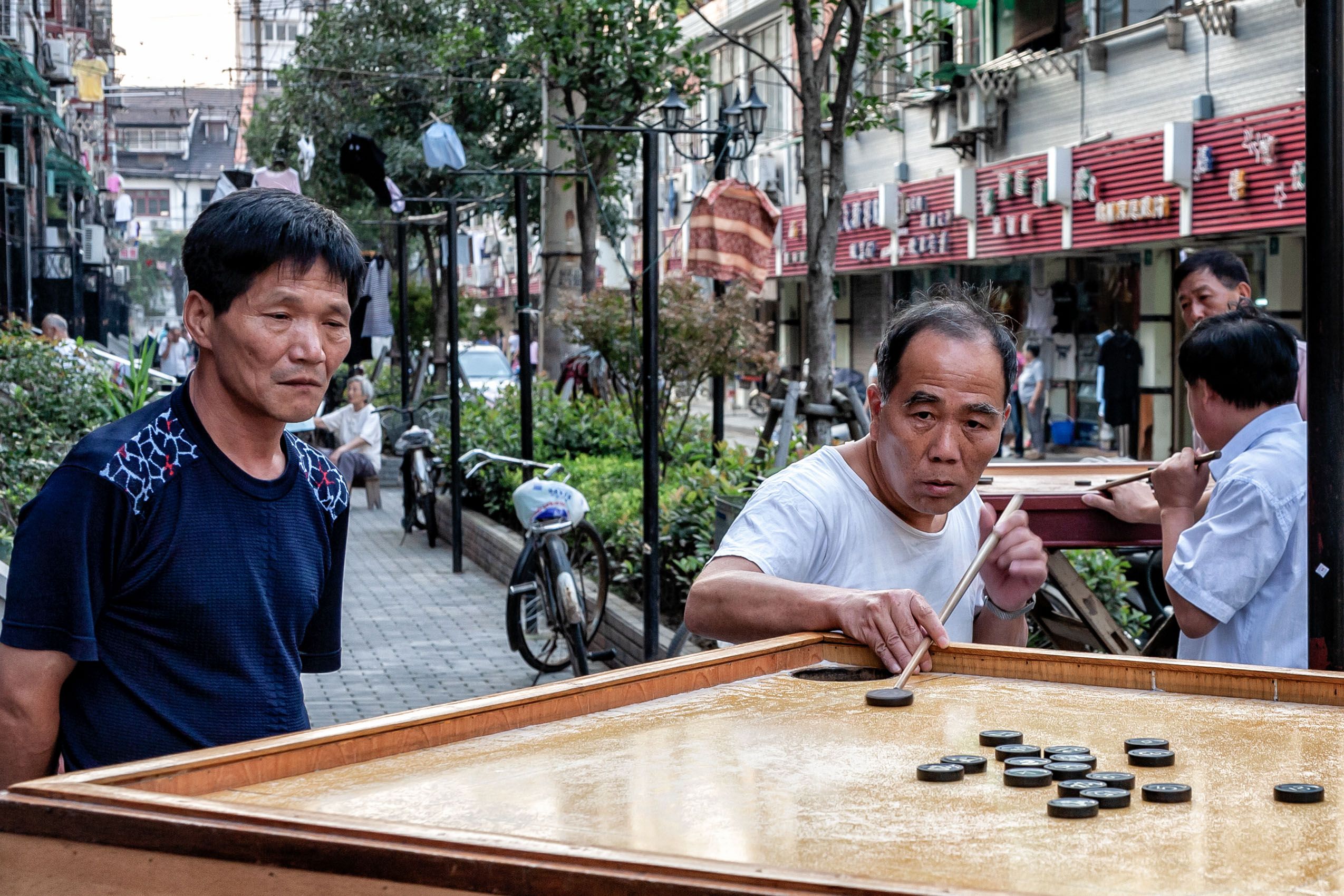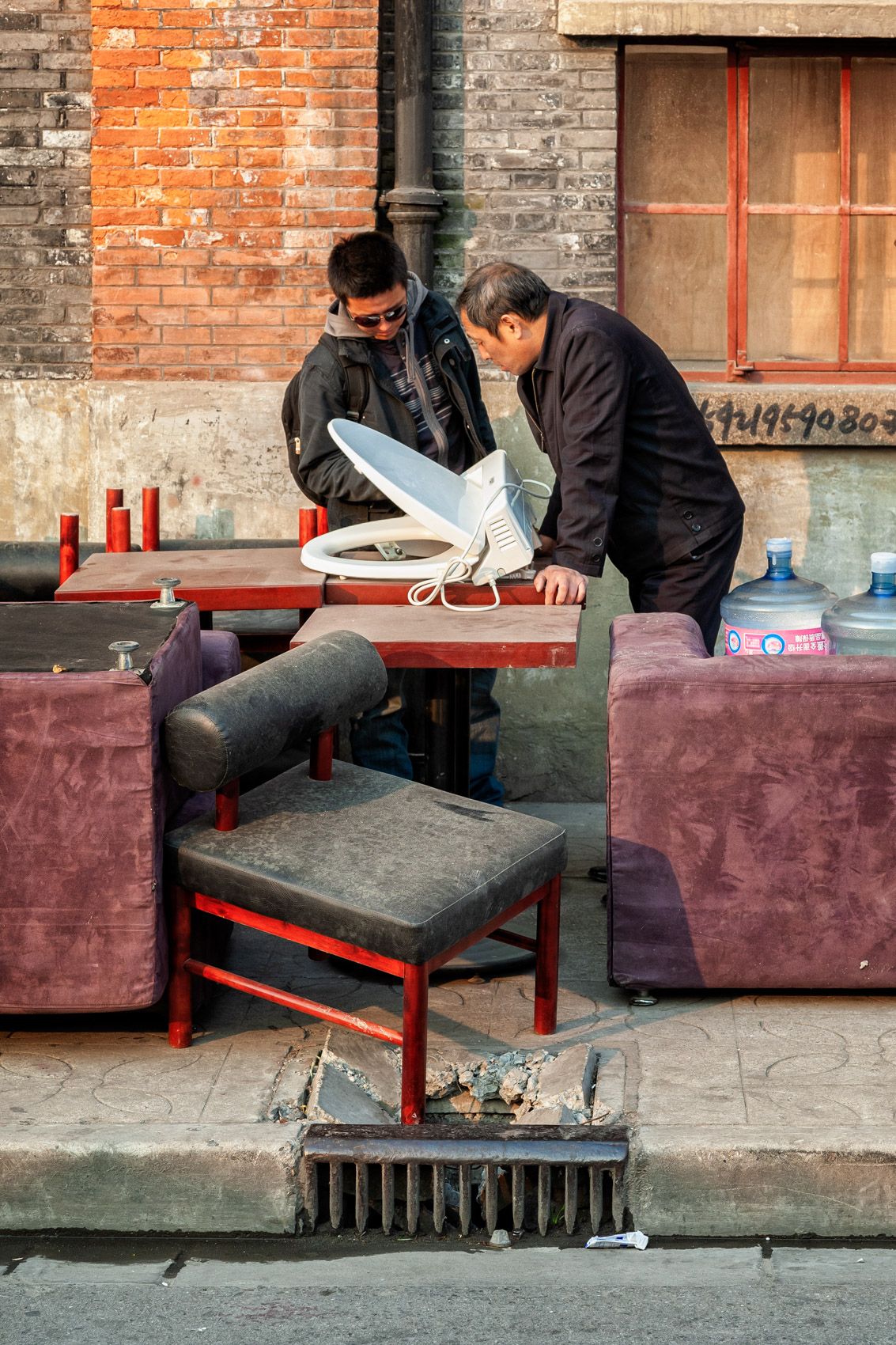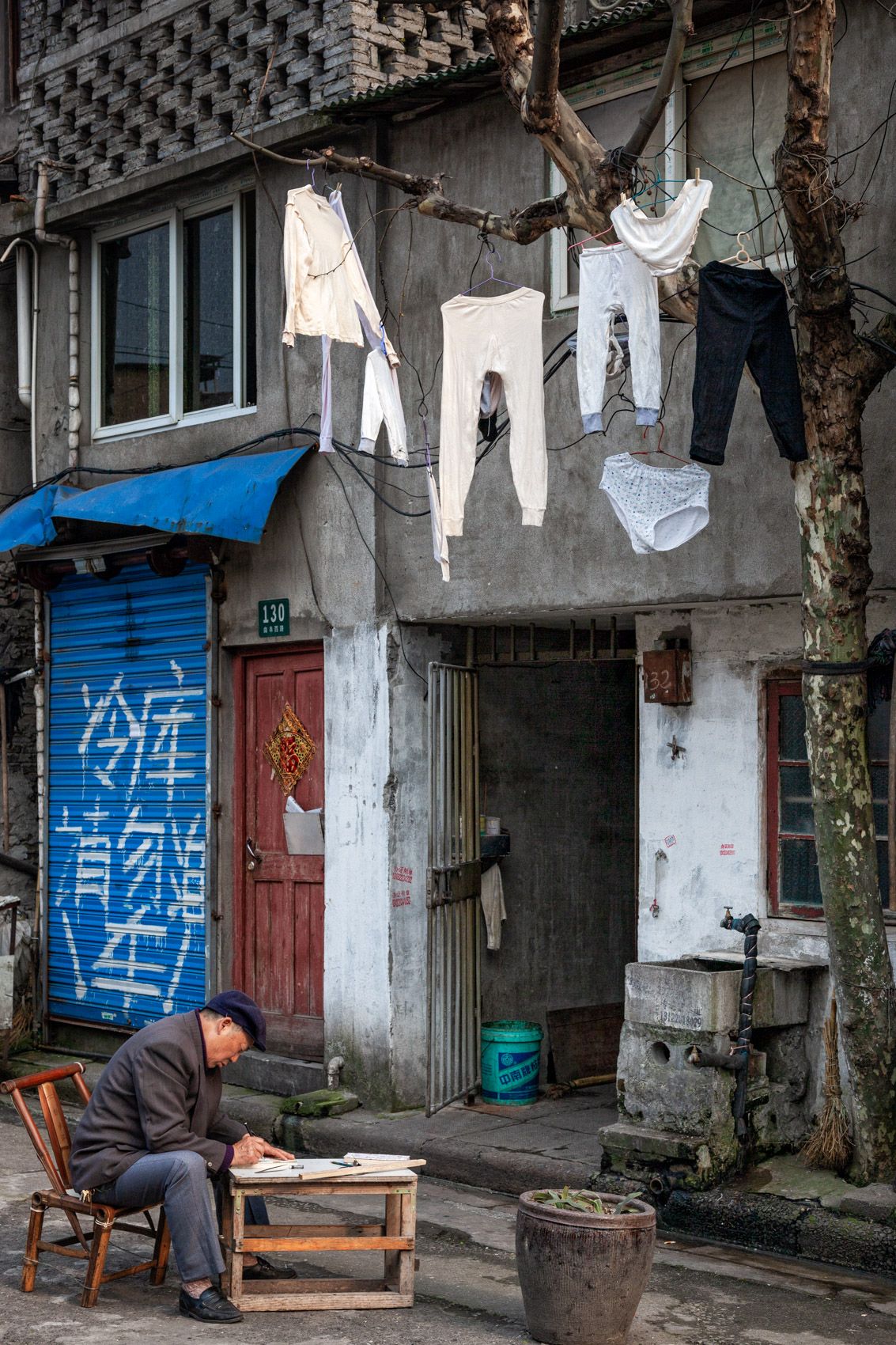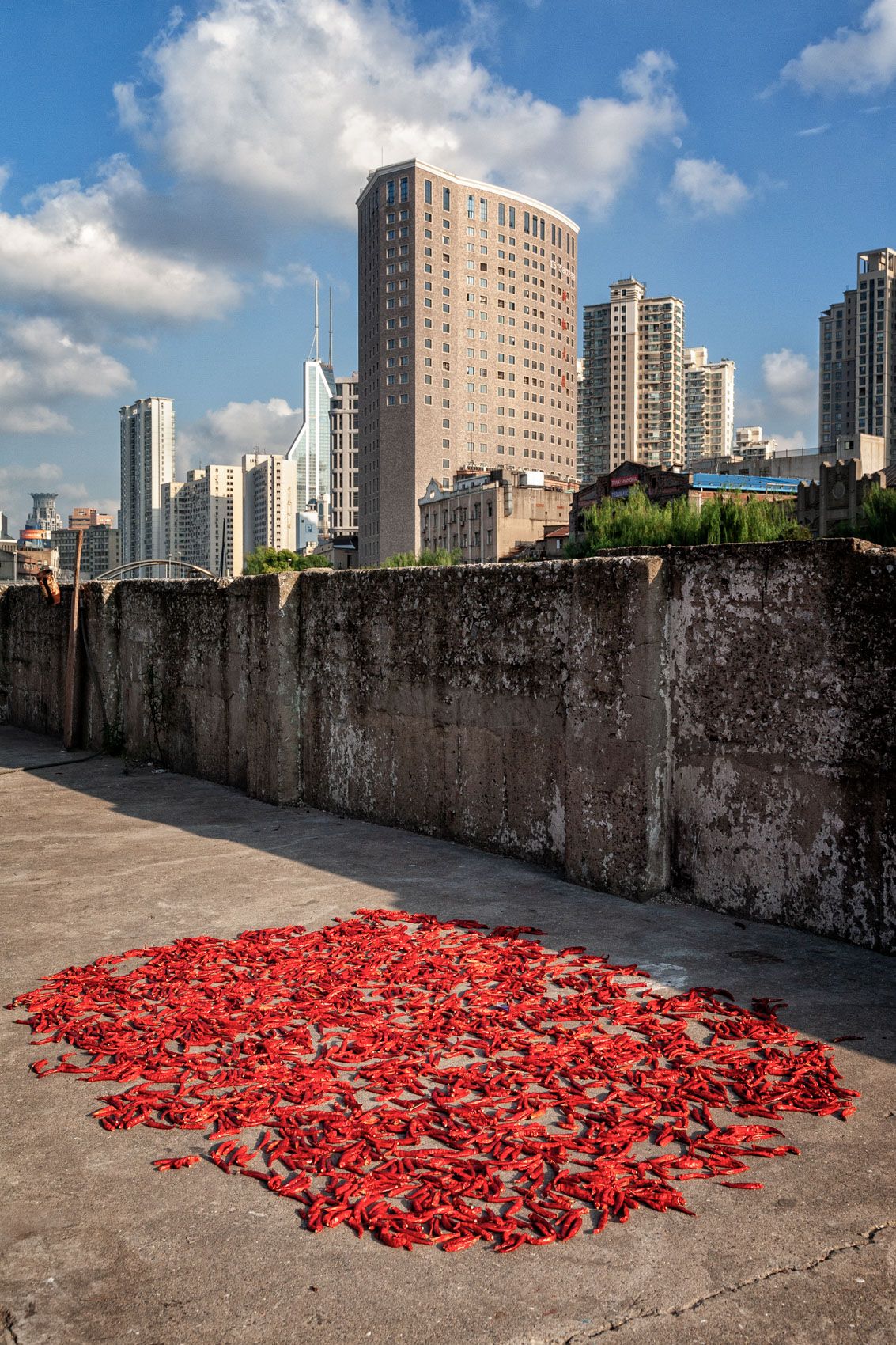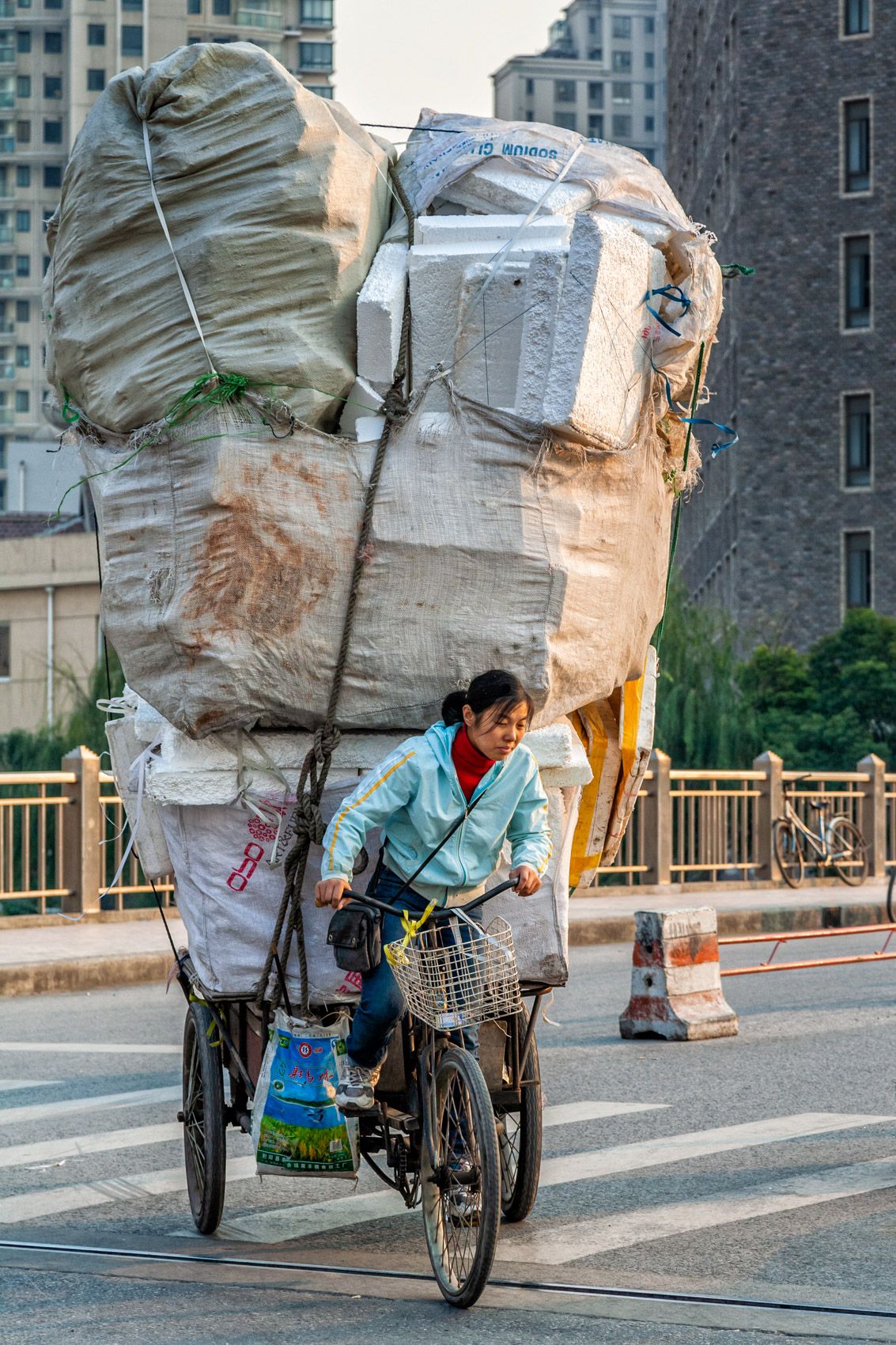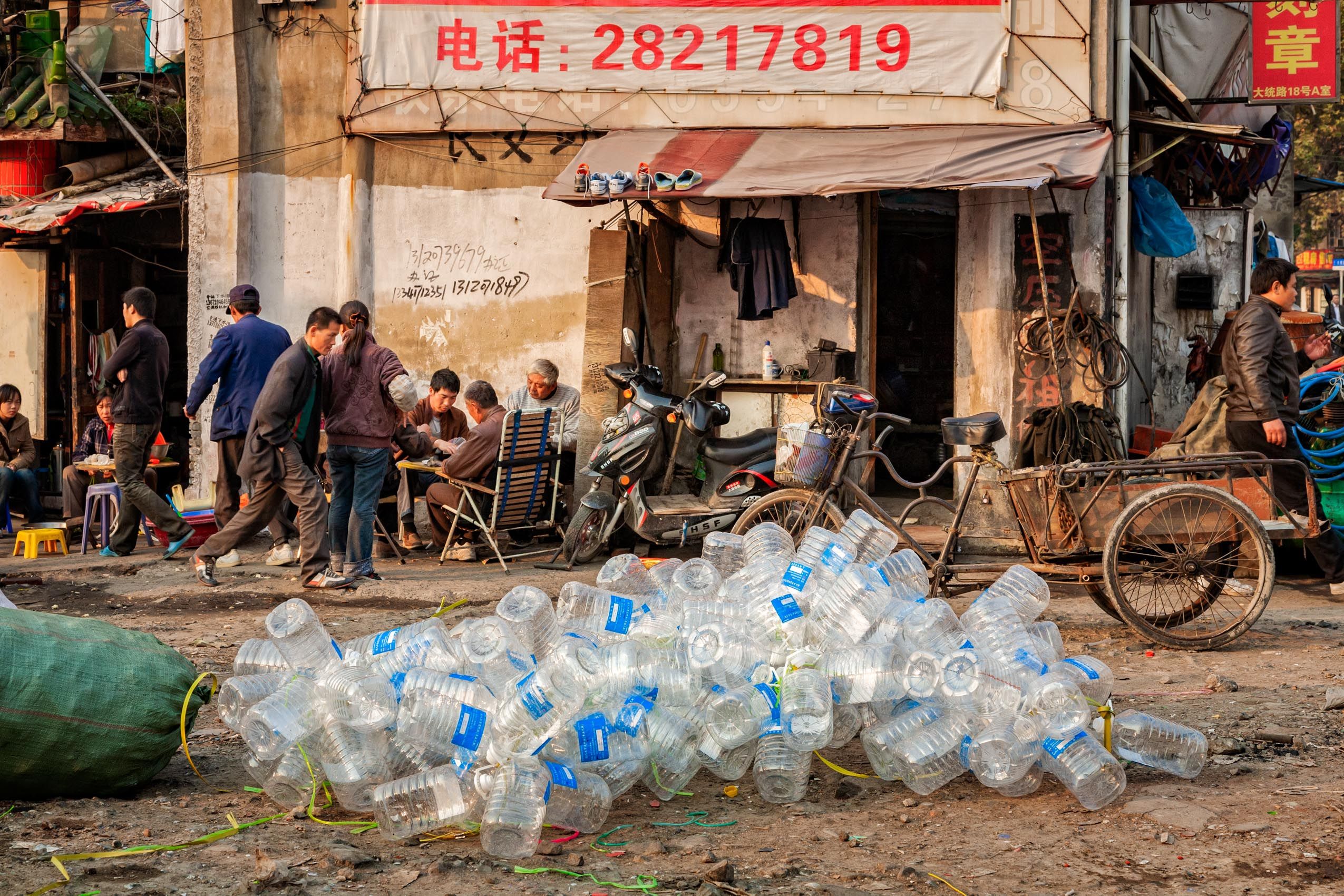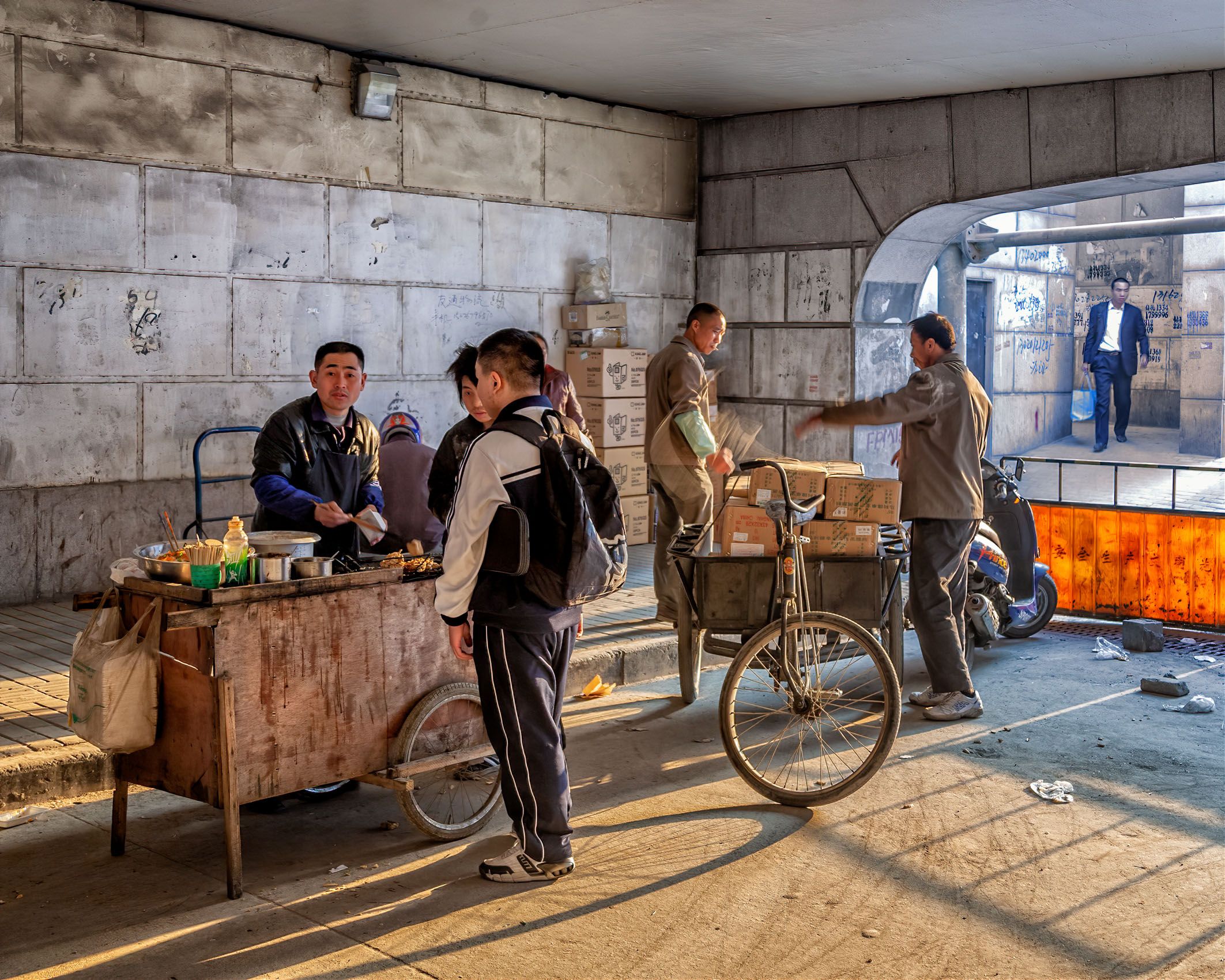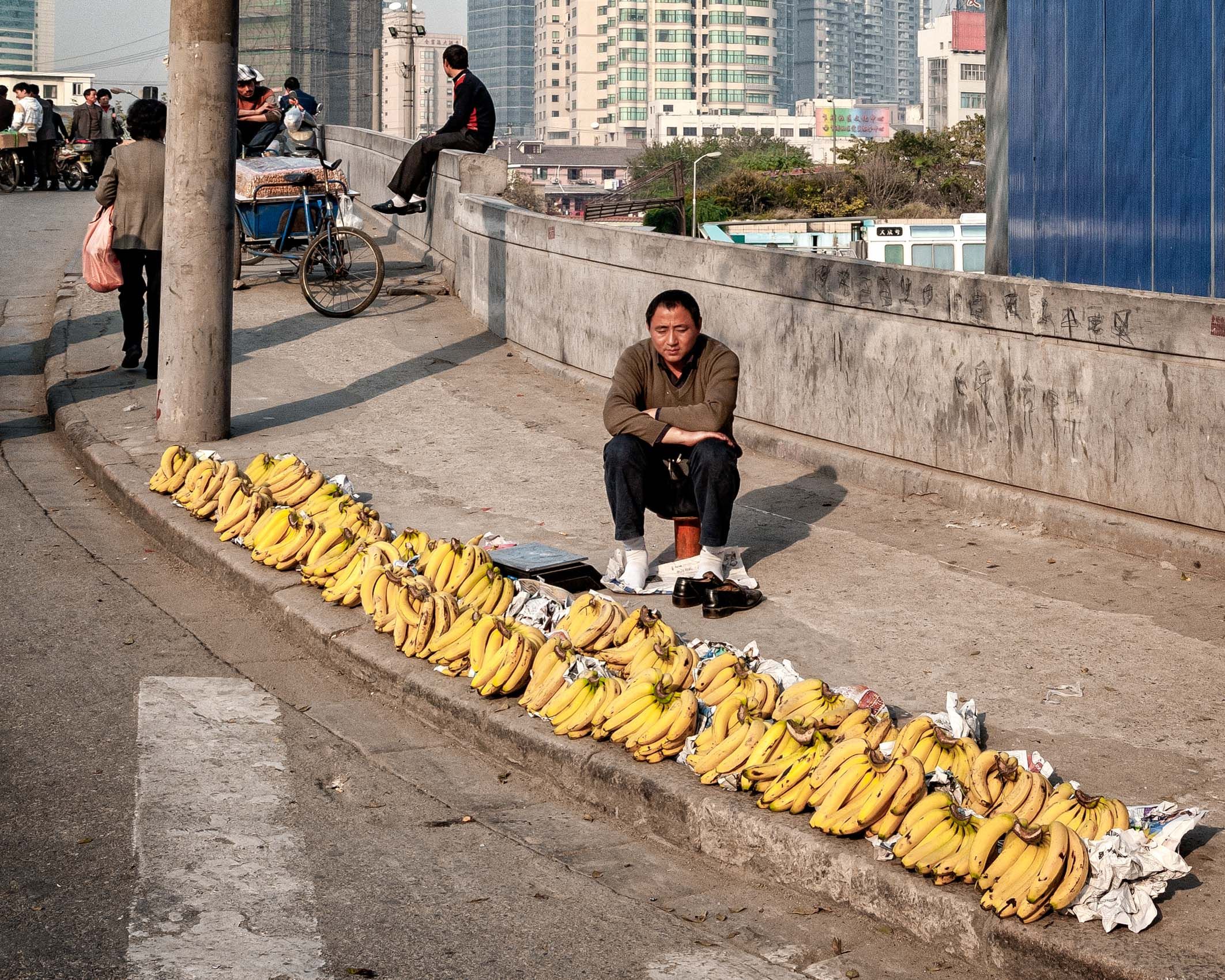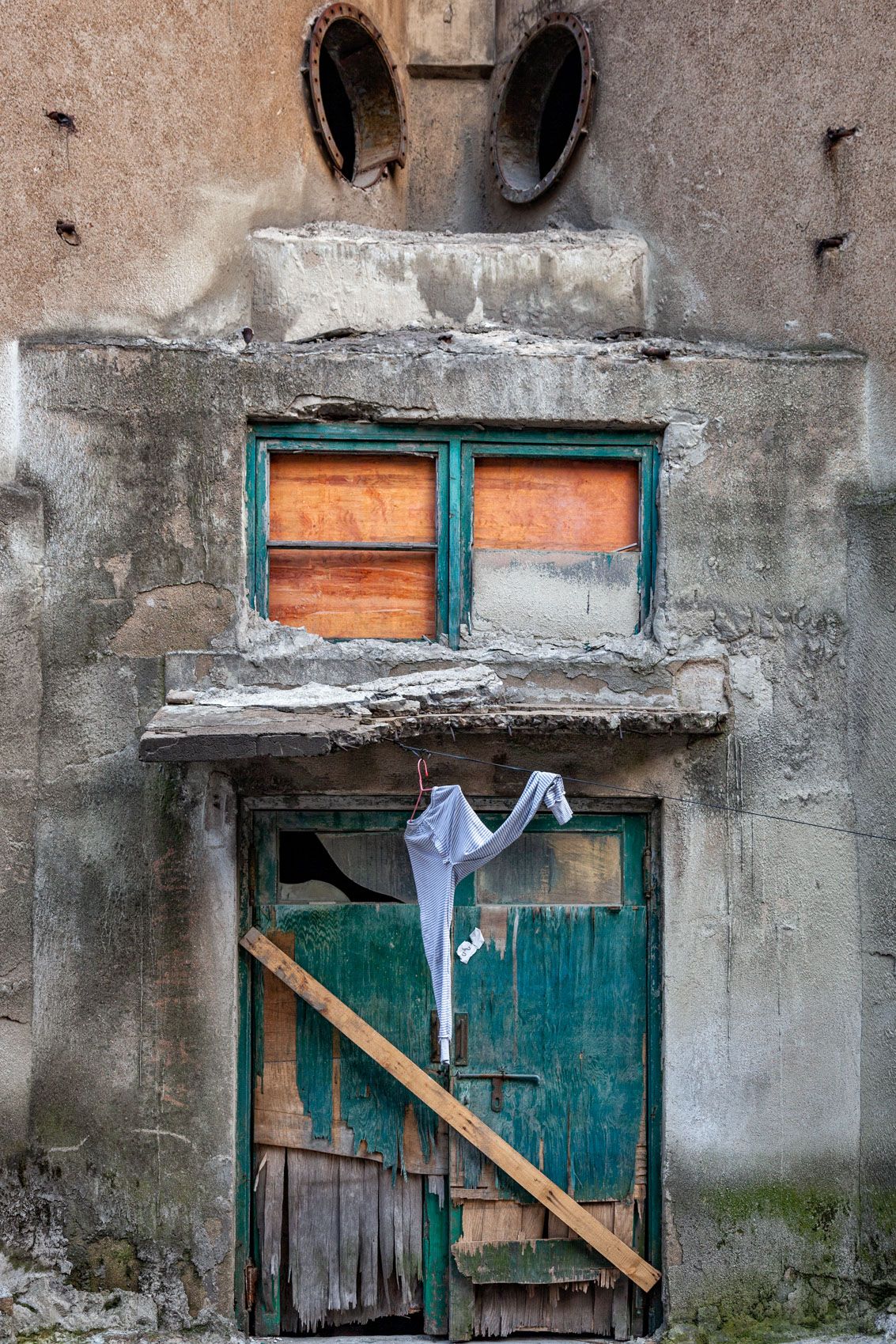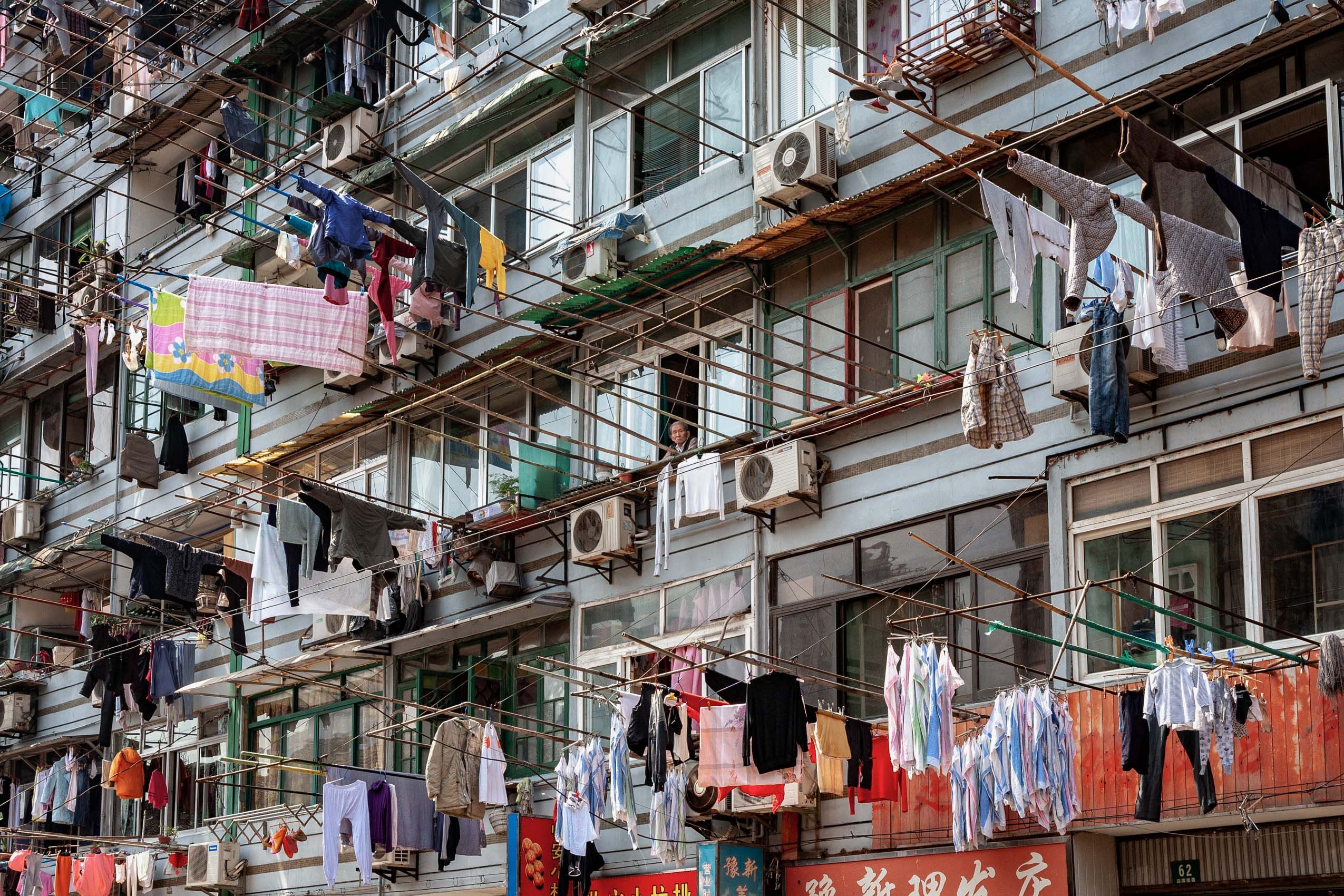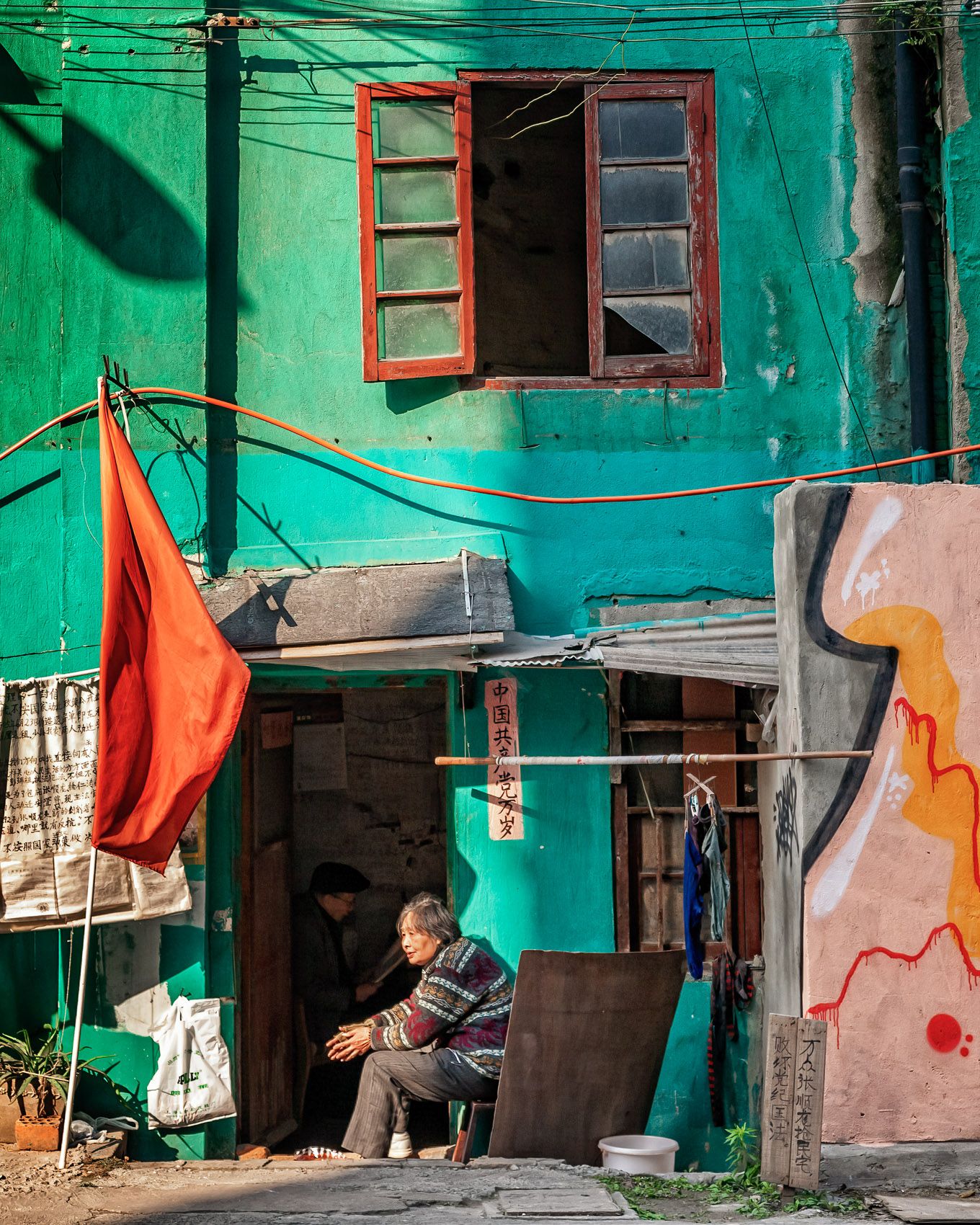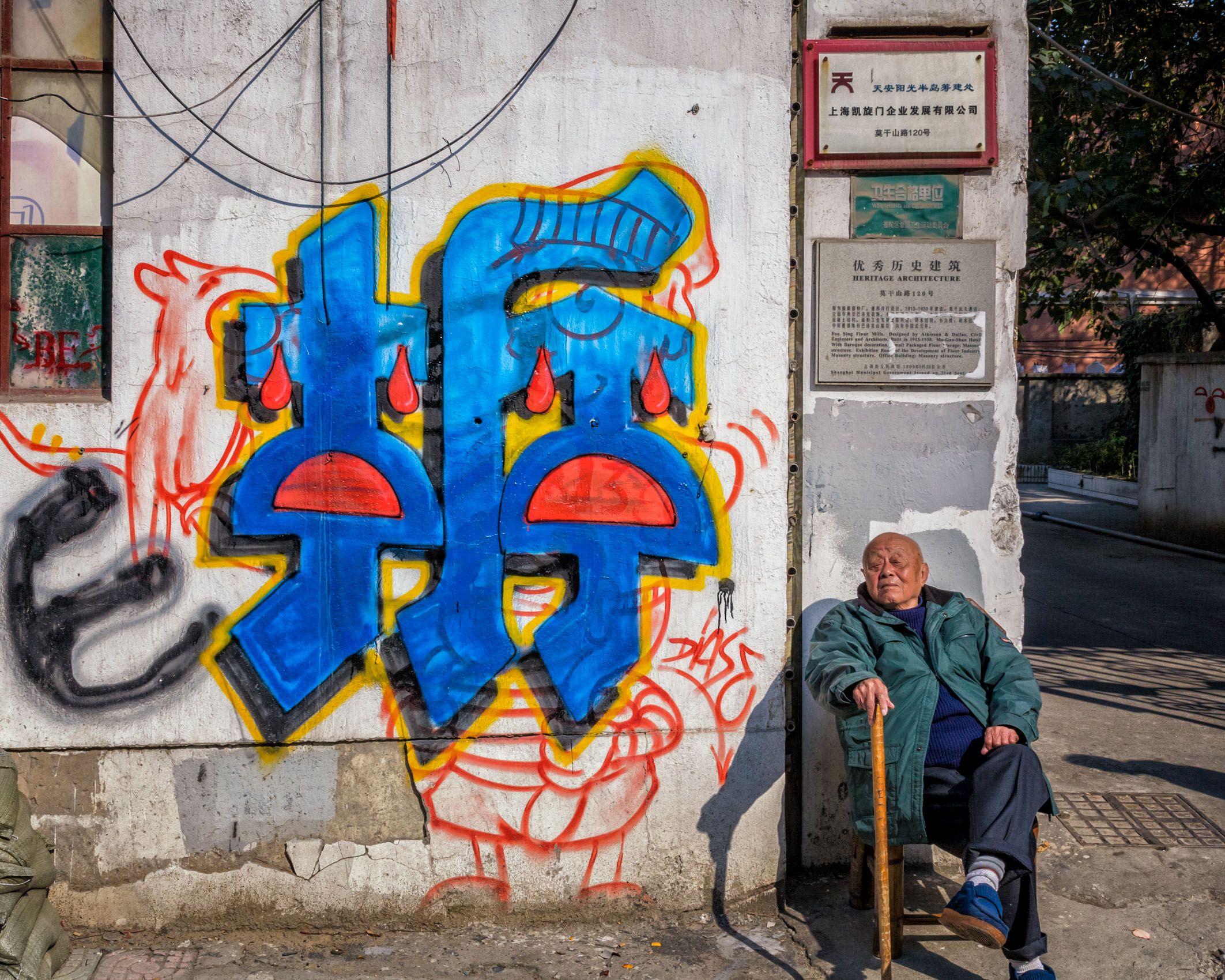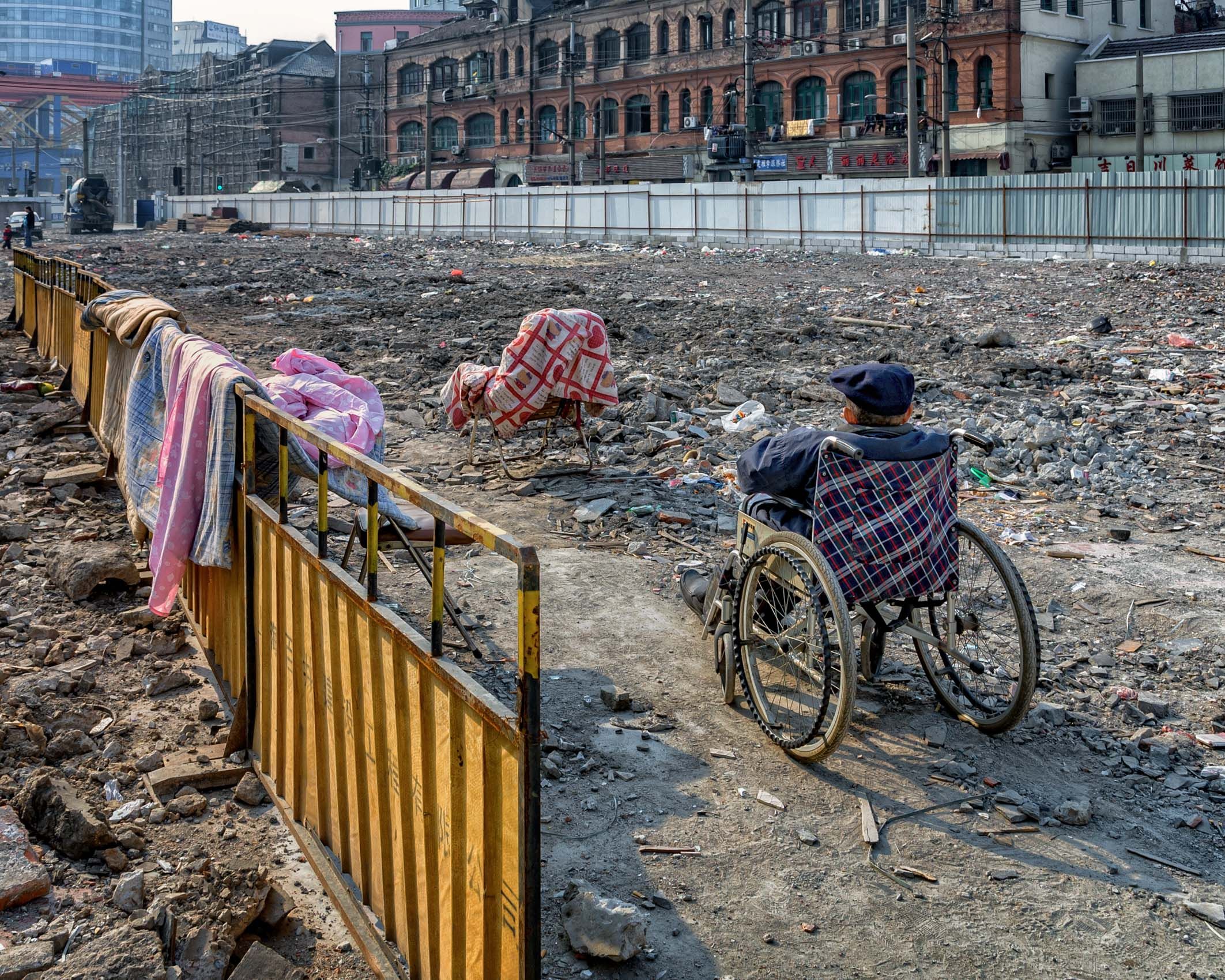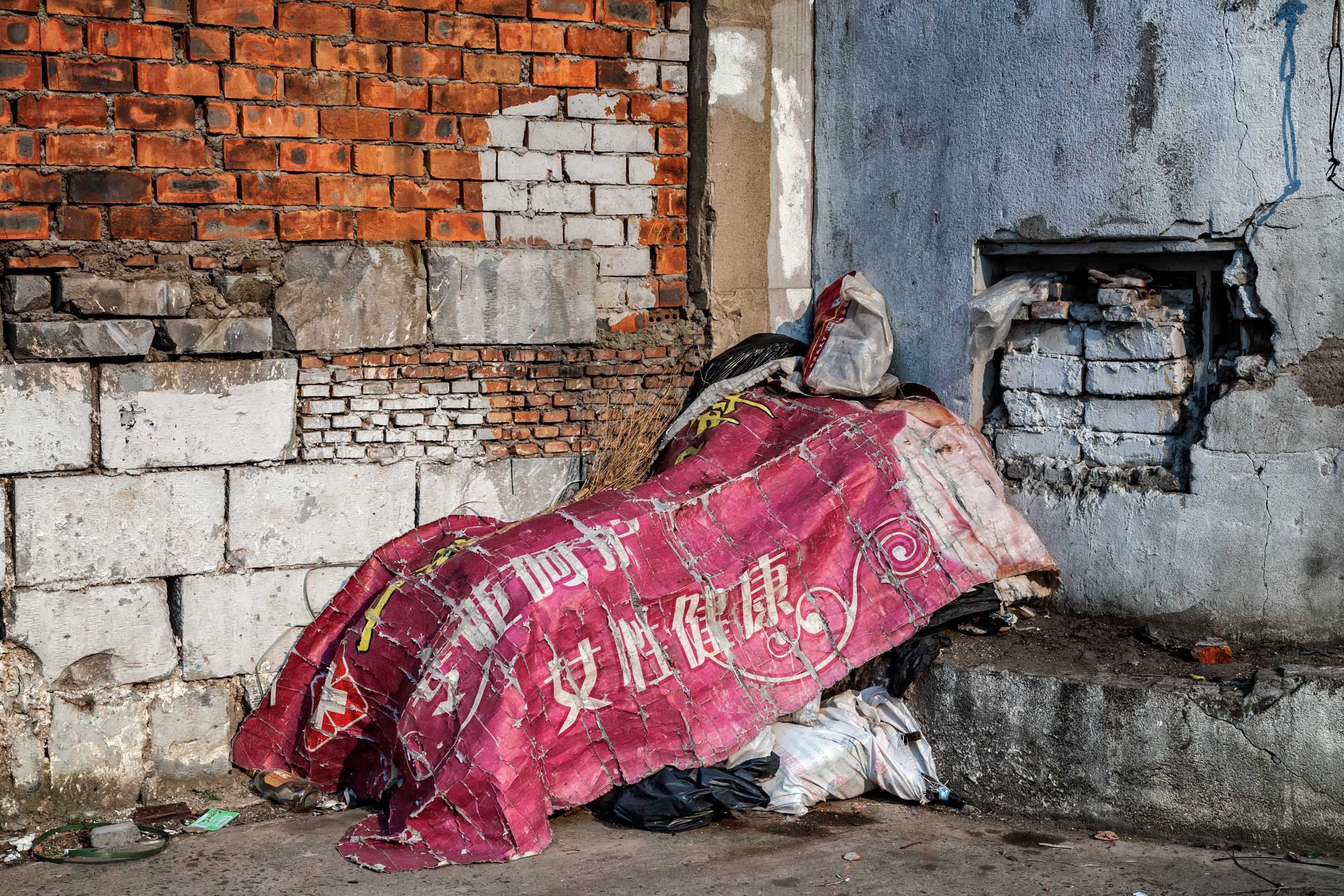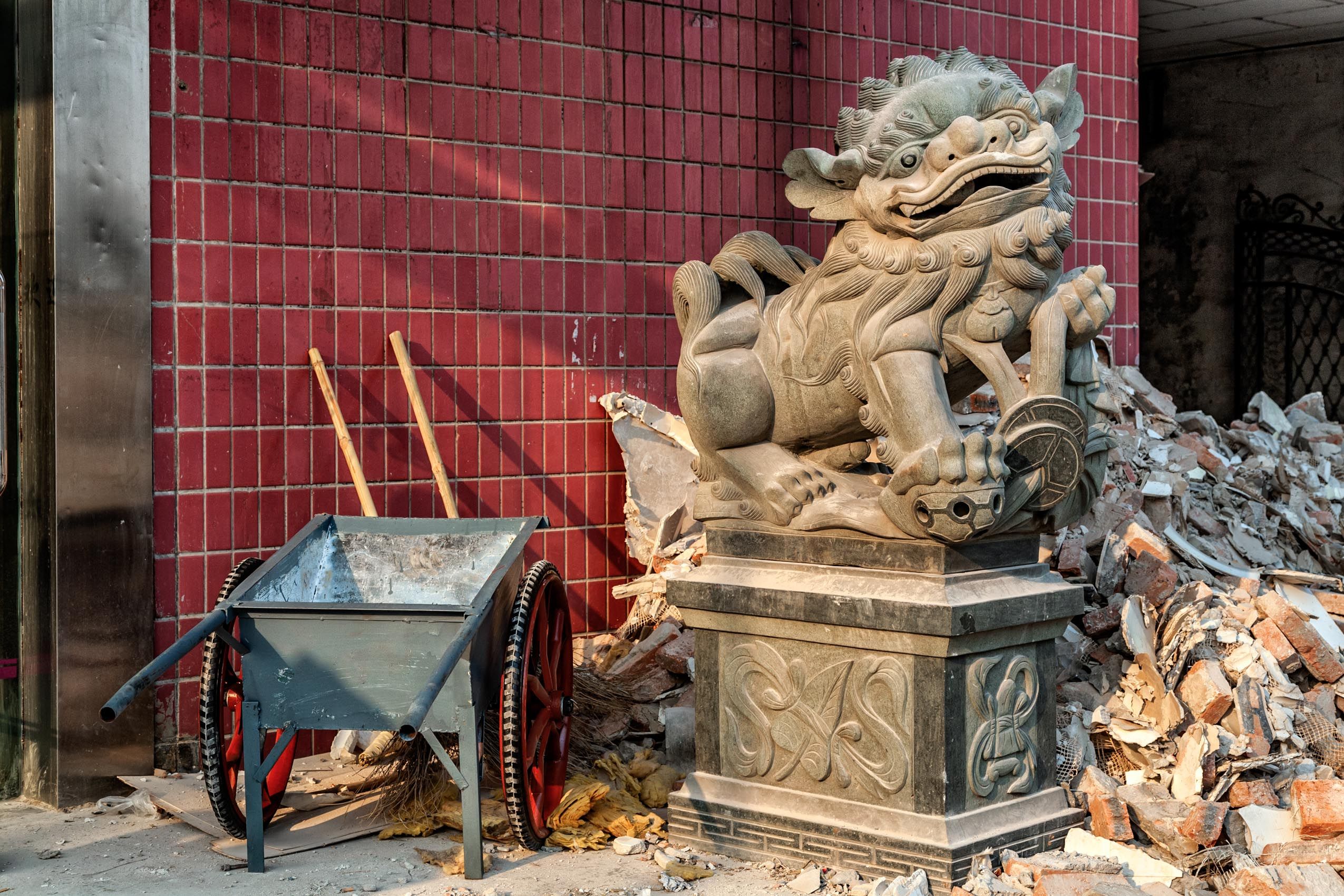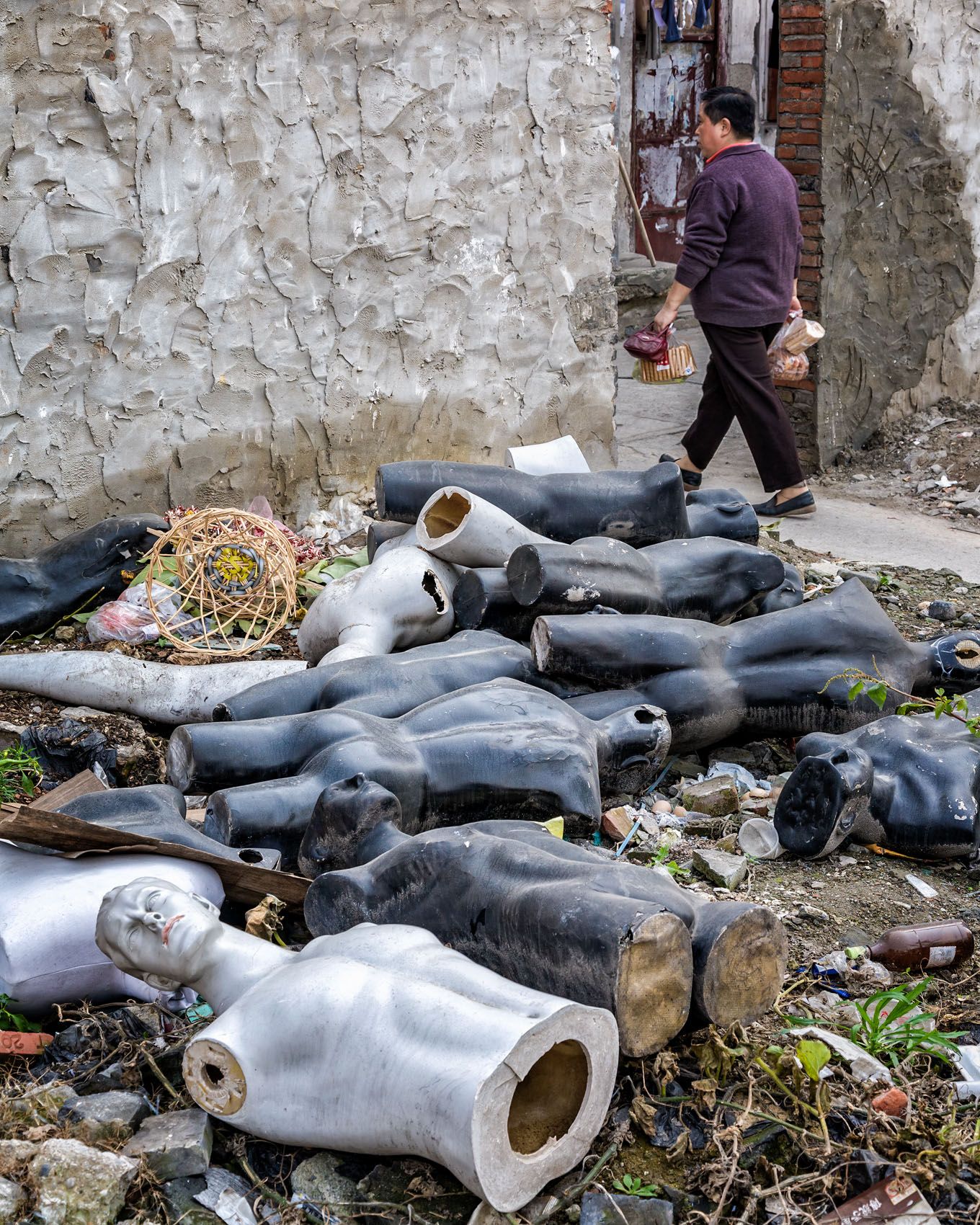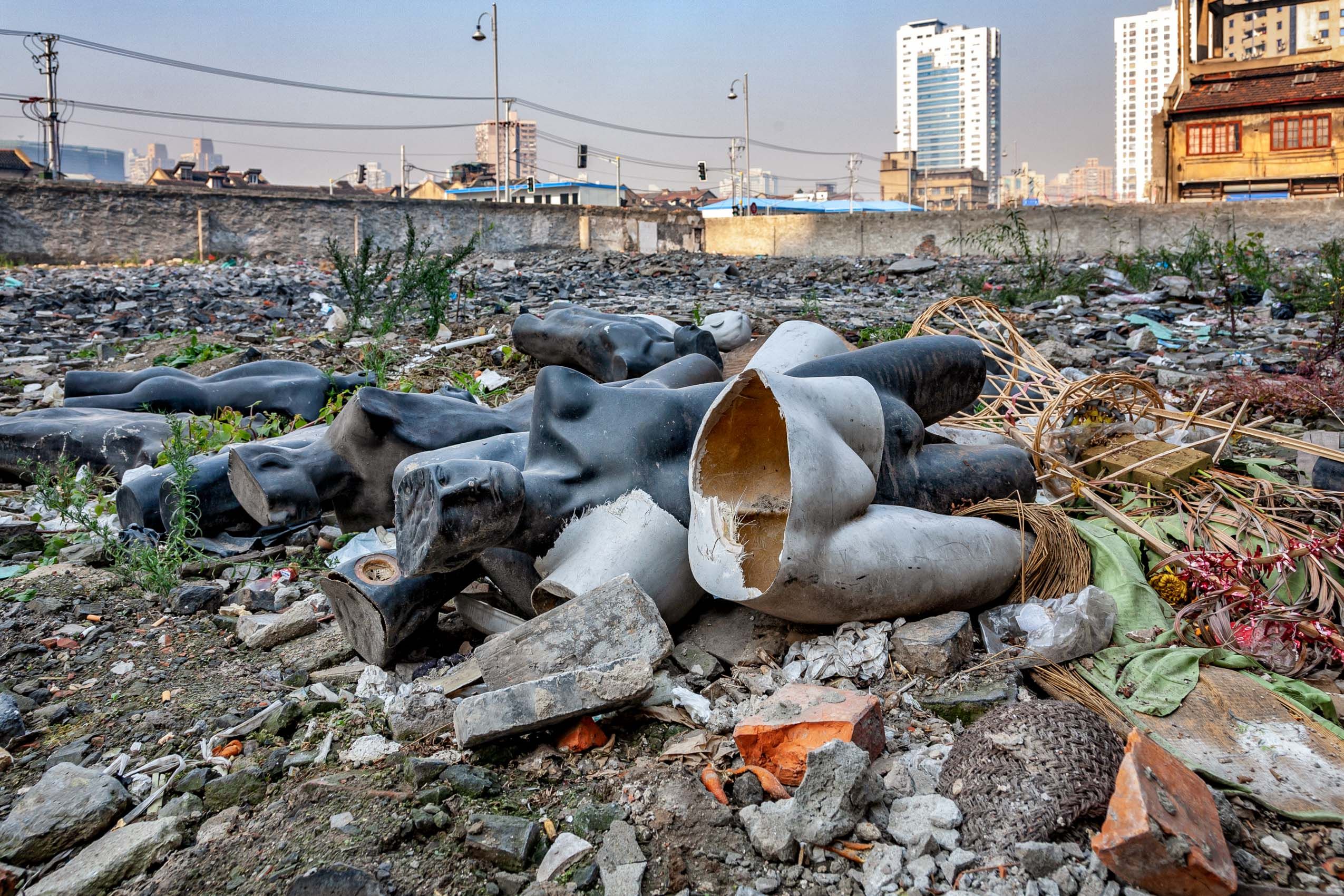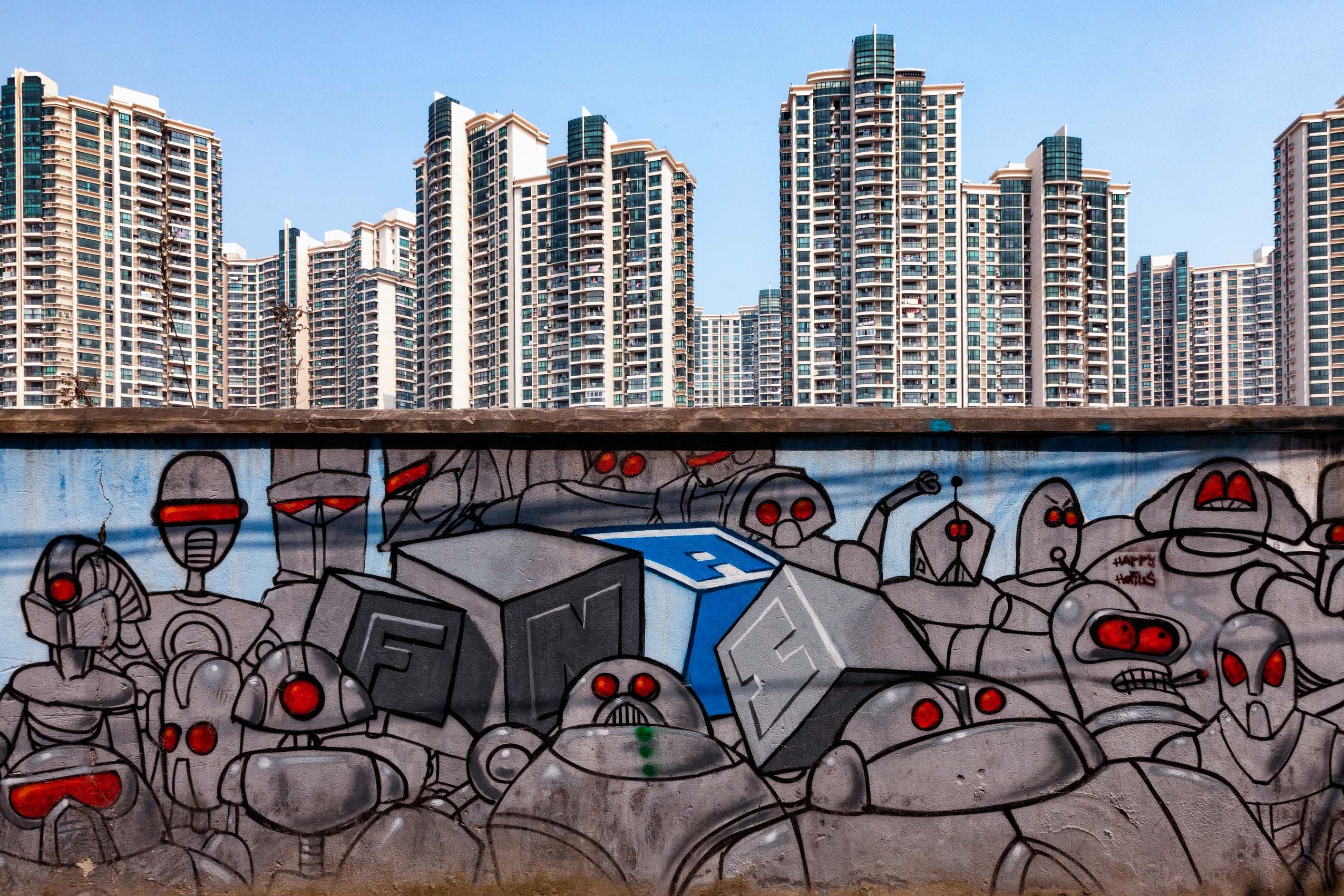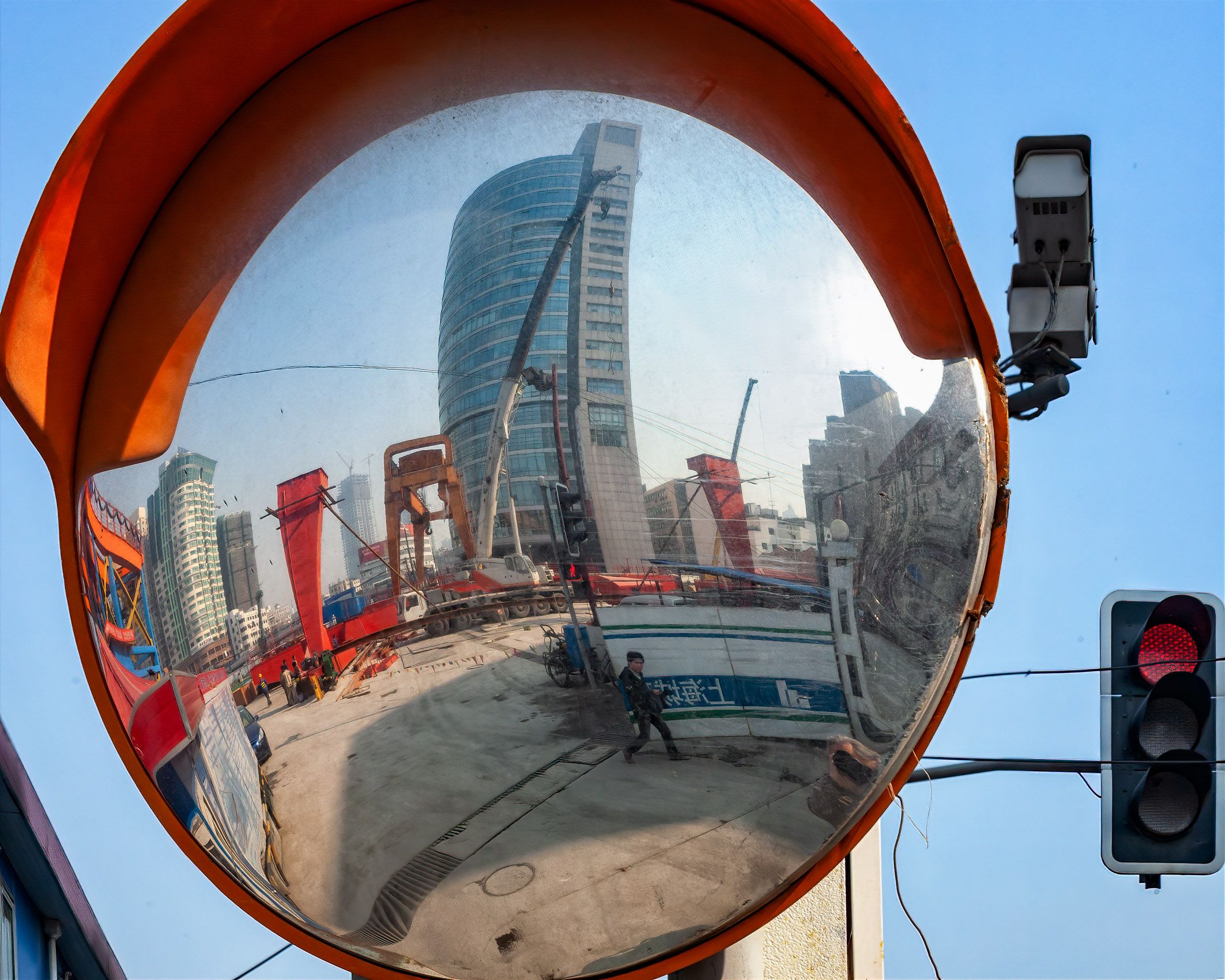CHINA: The Other Side of Shanghai
I had occasion to spend a few weeks in Shanghai during visits to China in the period 2008-09, during which time the focus of my photographic interest was the largescale process of destruction and construction taking place in the areas bordering Suzhou (Wusong) Creek in the north of the city and west of the Huangpu River. A massive revitalization project was underway, involving a major cleanup of the notoriously polluted river, the destruction of a number of traditional working class neighborhoods and many dilapidated and partially abandoned structures that had contained factories, storage facilities, shops and residences. The process of gentrification encompassing the construction of luxury riverfront high rise condos and greenbelts also meant the displacement of many longtime poor residents and the obliteration of whole neighborhoods. In this moment of urban transition, a project rich in visual potential presented itself to the street photographer: abandoned ruins and their human traces, longtime residents whose world was being turned upside down, migrant workers whose labor was fundamental to the transformation of a megacity that was otherwise inaccesible to them. These were subjects I found far more compelling than the glamour and ostentation of the Bund district and the Pudong skyline. The scene was changing literally before my eyes, and sometimes a street or neighborhood was barely recognizable upon a return visit after just a few months’ absence. This portfolio, then, is a record of arrested moments in that tumultuous process of social change.

